SCREEN SAVERS



















Tips to reduce eye strain





























KID STUFF
Adita Lang sets the table
Chamber director offers insight


Preventive screening for a variety of illnesses often can save lives

'19
OCT
FACING DEPRESSION
CARDIAC CARE
Life-saving cardiac care. Close to home.
We’re more than an Accredited Chest Pain Center. We’re a team of experts who perform more than 600 open heart surgeries a year. From diagnosis to treatment and rehabilitation, you can trust us to get you back to the people and places closest to your heart. Visit leesburgregional.org to learn more.
By your side.

100% FINANCING AVAILABLE



















HOME & BUSINESS BACKUP GENERATORS Electrical Works installs both residential and commercial generators. The best part is generators on the market are much more affordable because Electrical Works offers 100 percent financing. 307 East Main St, Leesburg FL 34748 352.460.0810 electricalworksflorida .com LICENSE EC13005476 COMMERCIAL RESIDENTIAL
GET HIP! LIVE LIFE PAIN FREE, AGAIN.





At Advanced Orthopedics Institute we specialize in hips, knees, shoulders, ankles, wrists...and golfers.














If you are experiencing hip pain, playing a round of golf, climbing stairs, walking through the grocery store, even driving can be a challenge.


Our experience has expanded the boundaries of possibility in joint replacement, providing you with the most effective solutions for your unique needs, so you can get back to doing what you love most.

Get moving. Call 352.751.2862. GET

A-OK
WITH AOI






















1400 N US Hwy 441, Suite 552 | The Villages, FL 32159 phone 352.751.2862 | fax 352.751.5541 | go a o i .com
John T. Williams, Jr., MD Alfred J. Cook, Jr., MD




































Appointments: 866.400.DERM (3376) Brownwood Paddock Square™ 3614 Kiessel Rd. The Villages, FL 32163 352.571.7000 Buenos Aires Professional Center 1503 Buenos Aires Blvd., Bldg. 100 The Villages, FL 32162 352.753.2812 Lake Sumter Landing™ 910 Old Camp Road Suite 166 The Villages, FL 32162 352.205.4959 The nation’s largest dermatology practice has three locations in The Villages ® community. We now accept United Healthcare Medicare Advantage. Lasers Now Available at Lake Sumter Landing Fine lines, brown spots, skin rejuvenation, tattoo removal Stephen Eubanks, MD, FAAC ADCS National Laser Director Ellie Mirali, MPAS, PA-C Board Certified Physician Assistant Welcome for more beautiful skin Fall
General Dermatology


Comprehensive care for skin, hair and nail disorders including eczema, psoriasis, rosacea, dry skin, moles, skin tags, adult acne, hair loss, ingrown hairs and more


Skin Cancer Screening, Biopsies and Treatment

M ohs Micrographic Surgery, Annual Total-Body Skin Cancer Exams SM and Photodynamic Therapy



Cosmetic Dermatology







BOTOX®, fillers, skin rejuvenation, chemical peels and other aesthetic procedures, and skin care products





AdvancedDerm.com Immediate Appointments Available | Most Insurance Accepted (including UnitedHealthcare ® The Villages ® MedicareComplete ®) Helping Patients Achieve Healthy, Beautiful Skin… At Every Age
OUR VISION IS TO MAKE YOURS BETTER.



COSMETIC, PLASTIC AND RECONSTRUCTIVE SPECIALIST WITH EYE-OPENING EXPERIENCE.


















With all of our specialists board certified, our practice is proud to offer comprehensive eye care under one roof, so you can be sure you are receiving the best possible treatment options for you. Renowned for participating in nationwide research studies and pioneering advances in vision-saving technologies, Mid Florida Eye Center provides the expertise you need and the dedicated care you deserve.

MOUNT DORA | LEESBURG ADJACENT TO THE VILLAGES ® COMMUNITY: STONECREST & WILDWOOD ® 888.820.7878 MIDFLORIDAEYE.COM CATARACT | RETINA | COSMETIC | GLAUCOMA | LASERS
Dr. Goldey
J.



21. Word power.

newest contributor, Adita Lang, a health guru known for her
Adita Lang
26. The earlier, the better.
asymptomatic, people should be diligent in scheduling screening examinations for

Most diseases are much more treatable when
















Story:
34. Be a good pupil. Digital eye strain is increasingly becoming a public health offers four tips to help combat this Dr. Hanish Patel
DEPARTMENTS
48. Swish away the side effects. A magical mouthwash helps alleviate mouth pain

50. Be prepared. Dini Klein creates home-

54. Arm yourself. Arm-strengthening demos


56. It’s not a reach.
58. Boosting immunity. Are supplements all hype?
62. Once upon a time … help autistic children better manage their
66. The ultimate stressbuster. Peace is a


70. His advice is money.
72. Do you want to be a millionaire? Then follow these steps by those who have COLUMNS
Publisher’s letter Health matters Healthy inspiration
Oct. 2019 contents VOLUME 12 ISSUE 01
Scott Berry, this month’s healthy inspiration.
Photo: Nicole Hamel
It’s fall time
Happy October. This month launches us into all the fun fall holidays and leads us into the new year. I always love this time of year.
October always brings more awareness to cancer and other illnesses. They come to mind in a more prominent way, which usually leads me to make all of my annual appointments for checkups and physicals during this time.
That brings me to our cover feature. If we are more conscious about early detection and preventive ways to stay healthy, then we won’t have to be burdened with pain, sickness, illness and disease. With blood tests and scans that can show you years in advance whether you’re predisposed to certain health conditions, you can be more preventive and know ways to stay healthy.
You also don’t want to miss our article about whether we spend too much time in front of a screen. I bet
we all would answer yes to that. We are always looking at a cellphone, a computer tablet or our television. Read this month’s article to find ways to help protect your vision along the way.
And then, last but not least, we all need to read the article on stress. All we hear is “I’m stressed,” “I’m overwhelmed,” “I’ve got too much on my plate.” All the doctors are telling us that stress is the No. 1 killer. Jim Richards, who holds doctorates in theology, Oriental medicine and human behavior, contributes an article that provides important ways to help us better manage stress. Wishing you much health and happiness.
COMMENTS OR QUESTIONS? Our goal is to provide you with the best quality publication, so
Doug Akers / President doug@akersmediagroup.com
Kendra Akers / Publisher/Editor-In-Chief kendra@akersmediagroup.com
Sabrina Ciceri / Associate Publisher sabrina@akersmediagroup.com

editorial, design & photography
Jason Fugate Creative Director jason@akersmediagroup.com
Chris Gerbasi Managing Editor chris@akersmediagroup.com
James Combs Staff Writer james@akersmediagroup.com
Theresa Campbell Staff Writer theresa@akersmediagroup.com
Leigh Neely Staff Writer leigh@akersmediagroup.com
Victoria Schlabig Digital Copy Writer victoria@akersmediagroup.com
Volkan Ulgen Art Director volkan@akersmediagroup.com
Michael Gaulin Production Director michael@akersmediagroup.com
Douglas Tyler Designer douglas@akersmediagroup.com
Megan Mericle Designer megan@akersmediagroup.com
Anthony Rao Staff Photographer anthony@akersmediagroup.com
contributors
Dr. Richard T. Bosshardt, Dave Ramsey, Jim Richards, Dr. Steven Moravec, Dr. Alisa Cooper, Sine Wallace, Dini Klein, Chris Hogan, Kimberly Tice and Venita Litvack, Adita Lang, Dr. Hanish Patel, Nicole Hamel
sales & marketing
Tim McRae Vice President, Sales tim@akersmediagroup.com
Melanie Melvin Director of Marketing melanie@akersmediagroup.com
Dillon True Advertising Executive dillon@akersmediagroup.com
Shaena Long Sales Assistant shaena@akersmediagroup.com
administration
Deb Matlock Director of Client Services deb@akersmediagroup.com

Aubrey Akers Simmons aubrey@akersmediagroup.com

distribution
Scott Hegg / Distribution Manager scott.hegg@akersmediagroup.com
Sabrina
10 lakehealthyliving.com
Healthy Living. Published monthly by Akers Media, P.O. Box 490088 Leesburg, FL 34749 or 108 South Fifth Street, Leesburg, FL 34748. Phone: 352.787.4112. Fax: 352.323.8161. All contents are copyrighted © 2019 by Akers Media, Inc. DBA Lake County’s Healthy Living Magazine. All reproduction or use of content without written permission is strictly prohibited under penalty of law. The contents of the Lake County’s Healthy Living Magazine are for informational purposes only. The information is not intended to be an alternative to professional medical advice, diagnosis or treatment. Always seek the advice program. The ideas and opinions contained in this publication do not necessarily reflect the thoughts or opinions of Akers Media.
publisher'sletter
your feedback is vital.

















352.259.5126 Face2FaceFL.com THE VILLAGES LEESBURG TAVARES FACIAL COSMETIC SURGERY | BOTOX | LASER TREATMENTS | PEELS | SKIN CARE PRODUCTS Designed & Developed by Dino Madonna, MD AESTHETICS AND WELLNESS Ready to FACE your friends and family this holiday season? Ask For Your Complimentary Spa Consultation And Uplift Your Look Today!
LRMC GETS HIGH RANKING
Leesburg Regional Medical Center was recently ranked No. 3 out of 20 hospitals in the Orlando metropolitan area by U.S. News & World Report, according to a news release. In its 30th year, the annual Best Hospital rankings and ratings changed course this year. U.S. News studied patient-centered care and the difference in patient population at 4,500 medical centers around the nation.
LRMC also received the highest rating of performance in four specialty programs: heart bypass surgery, heart failure treatment, care of patients with chronic obstructive pulmonary disease, and knee replacement surgery.


“We are honored that our team has earned this sustained recognition for providing excellent, highquality care to our community,” says Don Henderson, president and CEO of Central Florida Health, the not-for-profit healthcare organization comprising LRMC, The Villages Regional Hospital, and TVRH Rehabilitation Hospital. “When we are acknowledged by a national publication that has very strict criteria for how they grade hospitals, and we stack up with some of the best hospitals in the state, it’s just another validation of our caring experts who are by your side delivering life-saving treatment close to home.”
TVRH ANNOUNCES NEW DIRECTOR


Brian Arndt is the new director of nursing on the administrative team at The Villages Regional Hospital. He is responsible for the hospital’s overall nursing care and patient perception of care.
“I am very passionate about providing exceptional, patient-centered care,” Brian says in a press release. “I came to The Villages because of the great environment here and the amazing hospital team. The depth of knowledge of the staff and huge volunteer group is nothing short of extraordinary.”
The new director’s health-care career spans 20 years in various hospitals and he has professional certification in nursing leadership from the American Organization of Nursing Executives. He plans to use his experience to continue the hospital’s goal of exceeding patient expectations.

“It is of the utmost importance to me that every patient under our care feels like a member of our family,” Brian says.
SNORE NO MORE
A Healthy Living staff member home-tested SomniFix Mouth Strips as a source for improving breathing, reducing snoring, and providing better sleep. While the strips work, it does take time to get accustomed to wearing them because they cover the lips, leaving a small opening for breathing through the mouth. SomniFix is clinically tested and designed to fit all lip shapes and sizes, according to information provided by the manufacturer. They do reduce dry mouth caused by mouth breathing, which was a noticeable benefit. They’re also hypoallergenic, gluten-free, and breathable. See somnifix.com for more information.

12 lakehealthyliving.com
COLD-FILTERED WATER
TAJA Coconut Water is the first of its kind to be cold-filtered. This is done with a patented oxygen-free production process. What does it mean? Better hydration when you drink TAJA, and the water keeps its natural nutritional content. Sampled by staff members, TAJA was deemed refreshing and great tasting, a definite improvement on simple water. Check tajacoconut.com for more information.

U.S. STATISTICS REGARDING ADULTS AND ANXIETY









6.8 MILLION 6 MILLION 15 MILLION 19 MILLION
SUFFER FROM GENERALIZED ANXIETY DISORDER
HERE'S YOUR GARDEN VARIETY COMPOST

Olga Kachook is a sustainable expert at World Centric for a Better World, an environmental organization. If you’d like to create your own compost for your garden, she offers these tips:



•
•
ARE AFFECTED BY PANIC DISORDER


ARE AFFECTED BY SOCIAL ANXIETY DISORDER
ARE AFFECTED BY SPECIFIC PHOBIAS
 Source: Anxiety and Depression Association of America
Source: Anxiety and Depression Association of America
The battle of depression
J. Scott Berry, executive director of the Tavares Chamber of Commerce, wants others to know how to get help.


Interviewer: Leigh Neely



When did you realize you were dealing with depression? I believe I’ve dealt with depression my entire life but wasn’t sure why I was feeling the way I felt. It wasn’t until my third attempt with therapy (that) my counselor suggested I had ongoing depression. Even then it was embarrassing.

What feelings brought you to this realization? I have numerous symptoms … but not at the same time. Sometimes I can’t get out of bed or leave my house. Sometimes it’s for a day, but I have had this last for weeks. Sometimes I am very short-tempered. There were times I abused alcohol or drugs. I’m not sure if that is a symptom so much as an attempt to avoid depression.
When did you decide to get help? In 2010, I had the worst bout ever; it lasted a solid year. I ended up in the hospital and almost died. Thank God (and I do mean that literally) a friend recommended a great therapist who helped me identify triggers, face hard facts about my life and taught me coping mechanisms. Once I began addressing it, I noticed a change.
What kind of help did you receive? Therapy worked for me. It takes longer and it’s harder because





you have to crawl into your attic, drag out that box, dust off the cobwebs, open it up, and deal with your past. However, it was worth it.
Do you have some tips you are willing to share about living with depression? At this point, I start every day with a possibility of it being a “low” day and try to embrace it and deal with it. Morning “quiet” times are crucial. I often sit alone, put on my favorite Broadway music, and enjoy a concert for myself. Or, sometimes it’s a sad movie I know will make me cry. I get the emotion out!
But mostly, it’s being truthful with your support system, whatever that is to you. And everyone has a support system; it may surprise you who it is. Be honest with them, do not be embarrassed. Lastly, it’s OK to feel low or sad but don’t wallow in it and don’t beat yourself up.
I recently made a huge, stupid mistake. I’m sorry for it, wish it hadn’t happened, but the former me would’ve plunged into depression. I didn’t. I accepted the consequences, learned a lesson, and am moving forward.
That’s what I did today. I hope I can do that tomorrow.
healthyliving.com healthyinspiration
Photo: Anthony Rao
HHA299992424


Skilled Nursing (RN, LPN) Physical Therapy



















Occupational Therapy



Speech Therapy
Certified Nursing Assistants






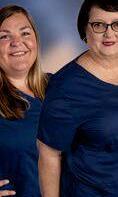

Medical Social Services
Medicare Assignment Accepted
Private insurance Accepted with Pre-Authorization



LAKE CENTRE HOME CARE
For more information about our services, staff and quality of care, contact us: Meet some of our team. We have highly skilled clinicians dedicated to all aspects of managing your home care safely and effectively.
310 Market St., Leesburg, FL 34748 Phone: 352.315.0050 | Fax: 352.315.0059
L-R: Ashley Bailey, RN, ADON - Jackie Stanfield, RN, DON - Haley Smith, RN - Kelly Staab - Chrissy Nichols, COTA - Steve Van Dyke, DPT Shanitia Brown, LPN - Shanya Grunewald, CEO - Jenny Stinson, PT - Renee Piryk, PTA - Kristin Coons, RN, Clinical Manager - Bailey Treves Pam Balthaser, CNA - Ashley Tatum, LPTA - Cindy Bahoot, PTA
Get On Board With iLASIK ®


LASIK laser vision correction has been around for years, successfully improving vision for millions of people around the world. Now there’s iLASIK, which goes beyond standard LASIK to deliver truly customized treatment. iLASIK utilizes iDESIGN®, the first and only system that integrates wavefront technology for superior vision diagnosis, exact eye mapping and unsurpassed precision, and the most advanced excimer laser and iFS® femtosecond laser, which together deliver the quickest, safest and most accurate laser vision correction available.
Vision Correction Built Precisely for You
Dr. Vinay Gutti has performed thousands of successful refractive surgeries and is the first local eye surgeon to employ the iLASIK platform with iDesign custom eye-mapping, which uses more than 1,200 points of data to provide eye mapping that is 25 times more precise than standard measurements for ultimate accuracy.


Is today the day to start seeing the world without the barriers created by prescription lenses?
If the answer is yes, the only choice is Lake Eye.

DISCLAIMER: Patient results may vary. As with any surgical procedure, there are risks that you should discuss with your doctor before you decide to have surgery. Some patients need additional laser surgery to attain desired results. Not all patients are able to give up corrective lenses after surgery. Possible side effects include loss of vision, double vision, increased sensitivity to light, dry eye, reduced night vision and visual irregularities from mild to severe.

www.LakeEyeLasik.com 1852
352•63•LASIK
Mayo Drive • Tavares, FL 32778
Michelle-O-Gram’s Legacy:
Michelle Blauser Standridge didn’t miss an opportunity to remind others to get their mammograms, especially during the three years she herself was battling breast cancer. She knew that early detection could save lives.
The cost of mammograms can be prohibitive, which is why the Michelle-O-Gram charity was established in her name following her untimely death at age 36. With the approval of Michelle’s husband and family, Joey Wiesbaum, RN founded the Dunnellon-based charity to carry Michelle’s message and reminder to everyone regardless

of age, race, or finances. MichelleO-Gram negotiated pricing (clients are responsible for just a $25 co-pay) and has partnered with radiology centers and clinics like Advanced Imaging (Ocala), Inverness Medical Imaging (Inverness), and Medical Imaging and Therapeutics and Sand Lake Imaging (both in Lady Lake). Through their partnerships and outreach, Michelle-O-Gram helps mainly women, but also men, whose lack of insurance or funds would otherwise prevent them from getting mammograms or follow-up examinations. Many have insurance with deductibles too
high for them to meet; others have no insurance. The high costs of these tests can lead people to ignore a cancer that then spreads. Recognizing the importance of early detection and follow-up tests, Michelle-O-Gram provides access to screening and diagnostic mammograms, breast ultrasounds and MRIs, BRCA gene testing and counseling, breast biopsies, and referrals for procedures and other treatments.
Michelle-O-Gram’s website, www. michelleogram.com, is a testament to their care. “One woman who felt alone, had no finances, turned to us and continues to call us to say, ‘thank you, you saved my life.’”
You can find Michelle-O-Gram at Mobile Mammography (Dunnellon Woman’s Club, October 5) and next year at the Southeastern Youth Fair hog sale (February 29), Southeastern Pro Rodeo (March 28), and Ocala Bunco Babes Tournament (April 4). Michelle-OGram has no administrative costs, so every donated dollar goes back into the community assisting those who need it. RBOI is a proud sponsor of this compassionate, lifesaving charity.
OCTOBER 2019 EDITION PAID PROMOTIONAL FEATURE
“Thank you, you saved my life”
Helping Each Other
RBOI's support groups are available at no charge to participants both during and after treatment. Our Breast Cancer Educational Group meets in our Lecanto office. Our Women's Cancer Group meets in our Ocala and TimberRidge offices and is available to people with breast cancer and gynecological cancer. Call us for more information.
by the numbers
The year Michelle-O-Gram was founded
Life-Saving Screenings Are Within Reach
The Florida Breast and Cervical Cancer Early Detection Program offers free or low-cost breast and cervical cancer screenings at many locations. Diagnostic funding is reserved for women screened through the program, which can help cover the costs of additional care.
Services provided include:
• Breast and cervical cancer screening exams (clinical breast exams, mammograms, and Pap tests).
• Care coordination to all clients with abnormal exams.
Number of people served by Michelle-O-Gram

30 to 50
Age of most women who have used Michelle-O-Gram
Counties served by Michelle-O-Gram (Alachua, Citrus, Lake, Levy, Marion, and Sumter)
• Referral to the Florida Medicaid Program for eligibility determination, for women screened through the program and diagnosed with breast or cervical cancer.
• Paid breast and cervical cancer treatment through Medicaid for eligible women screened through the program.
To see if you qualify, call your County Health Department or the American Cancer Society National Hotline at 1-800-227-2345 for more information. You can also call the Florida Cancer Program at 850-245-4330.
October 2019 19 Like us on Facebook Patient-centered radiation oncology close to home The Villages 352.259.2200 Ocala 352.732.0277 Timber Ridge 352.861.2400 Inverness 352.726.3400 Lecanto 352.527.0106
.com
RBOI
2009
almost 1500
6






352.728.2404 | LakeENT.net THE VILLAGES | LEESBURG | TAVARES SINUS DISORDERS | ALLERGIES & TESTING | THROAT CONDITIONS | AUDIOLOGY PROVIDING YOU AND YOUR FAMILY WITH DIAGNOSES, TREATMENT AND RELIEF BY OUR EXCEPTIONALLY TRAINED TEAM OF HEALTH CARE PROFESSIONALS
CREATING A NEW, IMPROVED YOU
Adita Lang is the newest author to become a contributor to Healthy Living. The daughter of two medical doctors, Adita began her career at age 16 as a fitness instructor and is still going strong. She is known worldwide for her work with biomechanics and resistance training. She also is known as a nutritional guru, a mind/body serenity coach, and an advocate for women.
Her book, “SuperPowers: The Busy Woman’s Guide to Health & Happiness,” has a growing audience and includes information on how to gain those “superpowers.”


“I wrote the book because of my life experiences. I’ve been in the health and wellness industry for over 30 years. I used to get a little annoyed with my clients for coming in with stains on their shirts and not finishing a workout,” Adita says. “I didn’t understand why until I had my two kids. With that, I started to recognize that my own flame was dwindling, and I didn’t enjoy that at all.”
Adita says she began to fine-tune her exercise, food, sleep habits, and happiness.

“These are the four components of health. I’d put in these little pieces throughout my day, and all of a sudden, I started feeling better,” she adds. “Other moms were saying, ‘I want some of that, too.’ So, I shared, and we started seamlessly adding little habits to supercharge your day and that’s where superpowers come in.”
The book is animated, colorful, and simple to read, as Adita wanted. There are worksheets to fill in and recipes included. When you’re finished, Adita says you have your own instruction manual.
“What works for me may not work for you,” she says. “I don’t tell people what to do. I teach them about essentials so they can maneuver their own plan to work for them.”
Exercise, as Adita sees it, is part of everything you do during the day.
“A recent study from the American College of Sports Medicine says all you
need is 150-300 minutes of activity a week,” Adita says. “Activity is defined as something that raises your heart rate and makes you break out into a sweat.”
While women have a tendency to care for others, she cautions them not to neglect their own health and well-being.
Adita is always available for questions. See aditalang.com or email her at info@aditalang.com and she promises to happily answer questions.
 Author Adita Lang is handing out superpowers.
Story: Leigh Neely
Author Adita Lang is handing out superpowers.
Story: Leigh Neely
FAMILY HEALTH
Begin early to achieve good results later.
Story: Adita Lang
Health has many definitions, but no matter how you look at it, it’s the foundation for our fitness, energy and stamina until death. Motherhood comes with its own set of challenges, but one of our primary jobs is raising healthy children. Before you get crazy with details, realize this is more than

forcing broccoli as a side dish. This is about teaching habits that go with a toddler to elementary school, through high school and into college and all the way to businesswoman or businessman extraordinaire.
Let’s take each facet of life and discuss habits that are stepping stones to the next phase.
TODDLERS
Flavors are starting to develop and the art of cooking and manipulating flavors can be powerful. Here is where you hide nutritious items and create combinations that are tasty enough for the pickiest eaters yet bring nutrition with each bite. Getting children involved in the kitchen is paramount at this stage. I realize it can be messy, but the lessons of flavors and tasting are invaluable and make life easier as kids grow. Simple things like marinara sauce, ground beef, smoothies and even pancakes can hide more than you imagine. Your
food processor is your best friend in the kitchen. Also, teach them what protein is. Granted, it won’t happen overnight, but you can lay the groundwork.
Great health also incorporates activity; playing and running should be main staples of exercise. Be sure they get their movement in before TV or electronics. I hate to say it, but toddlers are like dogs: they need to run in order to get all their energy out in a healthy, productive manner. Join them; the bonding is awesome and the calories burned are even better.
ELEMENTARY SCHOOL AGE
These tikes have opinions, but you hold the keys to the kitchen. Your children will not starve, and I say this to you with love. Many kids demand a different dish and you must stay strong and create variety in the meal. There should be no thought of making something else to get them to eat.
If you are exposing children to the kitchen, you will have a good eater. If not, it’s time to get busy. The more exposure they have, the more open they are to trying new things. It’s time to incorporate a fruit or vegetable into every meal

and snack. They will gravitate toward processed foods if you let them. Let that happen at a friend’s house, not yours. Your home is the forefront of health. In my home, we have a “4-taste rule.” Foods need to be tasted on four different occasions before being deemed evil.
for sports or outdoor play for hours. Everything works better with activity: your brain, energy and attitude. Encouraging activity before TV and electronics sets the stage for habits of a lifetime.
22 lakehealthyliving.com ORGANIZING
HIGH SCHOOL


OK, my friends, this is a time when the kids should make breakfast for YOU. By now they need to be able to follow a basic recipe. You are training them to function completely on their own and it’s time they kick in. They should understand food choices, how energy is impacted by wrong choices and how the right combination of proteins, fats and carbohydrates can empower or drain them. They are old enough to buy snacks, so this is where the earlier years of coaching come through.
to a sport in early years. Keeping



them in organized sports is easier
organized sports, you’re good to go, but for those with no plan, consider taking a class or activity together to create a bonding time. If not, encourage them to do activities with friends. Movement needs to be a part of every day. These habits go to college and beyond. Keep in mind that muscle has memory. Even college years, they have a foundation and it will be much easier to become
ADULTHOOD
Your coaching comes full circle at this point. You send young ones off into the world with hopes that they make the right choices and you have instilled the right habits to carry them through. Think of it this way: do you want to send out an overweight, lazy, junk-food junkie into the world or a well-nourished, active adult who can cook great meals and is a snob for good nutrition?


Now, all of us have our challenging cases, but with love and persistence, keeping an active lifestyle and choosing the right food become the norm for your entire family. It’s all in how you present it—you’ve got this! I am driven to help you live a healthy, inspired life.
ABOUT THE WRITER → Adita Lang is author of “SuperPowers: A Busy Woman’s Guide to Health & Happiness” and “SuperPowers of the Family Kitchen.” She holds a degree lifestyle coach and health professional.
October 2019 23
FIT TO BE YOUR BEST





hen Cathy Hoechst talks about Wallace Fitness™, her eyes light up like a Christmas tree and a wide smile forms across her face. She knows it’s a place where the owners offer a different and innovative approach to fitness. Cathy is the former mayor of Mount Dora and a breast cancer survivor. Although the cancer drugs impacted her heart, she ultimately received clearance from her cardiologist to begin exercising.
Three days a week, Cathy happily walks through the doors of Wallace Fitness™ in Mount Dora. Without fail, she’s always greeted with warm smiles and a friendly hello from a very knowledgeable team of High-Performance Aging™ specialists who are laser-focused in helping her achieve her fitness goals.


“I’ve been coming to Wallace Fitness™ for four years, and I can honestly say that the staff here is like my extended family,” Cathy says. “The best thing about Wallace Fitness™ is that you don’t feel like you’re exercising but rather you’re putting yourself in an environment that allows you to get healthy in a fun and safe manner.”

Those words are music to the ears of Lincoln and Sine Wallace, who opened the company in 2010. Lincoln is a former world and national champion in martial arts, while Sine earned an engineering degree from Istanbul University and is also certified in personal training, weight management, and senior fitness and nutrition management.







They met in Canada and found a common love for helping others through fitness and each other. Now, as owners of Wallace Fitness™, they’re succeeding in both business and marriage.
Unlike a traditional gym where members pay a fee to a wide access of fitness services and equipment, Wallace Fitness™ is a world-class facility where everyone who comes through the doors receives a personalized exercise experience. In fact, the facility is private, and clients come by appointment only. The one-on-one, High-Performance Aging™ exercises are 100 percent guided and supervised in a relaxing, nonintimidating atmosphere. They offer senior training, weight

PAID PROMOTIONAL FEATURE
Wallace Fitness™ in Mount Dora takes fitness to a whole new level.
management and nutrition, group training, strength training, and toning.

“We don’t have gym rats coming here,” Sine says. “People send us their mothers and wives.”
Most clients who they train are adults with injuries and limitations. Some are referred to Wallace Fitness™ by their doctors. For the Wallaces and their dedicated team of six employees, nothing is more gratifying than seeing a hip surgery patient exercising again, a back pain sufferer walking again, or an openheart patient performing 50 push-ups.

Wallace Fitness™ is well-equipped to treat these clients, who range from chief executive officers and doctors to nurses and grandmothers. One client is 93 years old. The team utilizes the Wallace Methodology, a unique training regimen that Lincoln implemented when he endured back pain and knee pain after retiring as a martial artist. He has been developing the system for 10 years. One aspect of this training regimen is their own sineSTRETCH™, a combination of assistedstretching techniques used as a therapeutic recovery treatment. The stretch reduces acute pain, creates range of motion, improves balance and posture, and increases blood flow.

But before clients begin a training regimen, they undergo an extremely detailed body analysis. Wallace Fitness™ is the first company in Florida to utilize the state-of-the-art InBody 570 Test, a non-invasive body composition analysis that provides a body composition analysis, muscle-fat analysis, obesity analysis,
and segmental lean analysis. The machine also provides total body water data on an intracellular and extracellular level. Equipped with this knowledge, the Wallace Fitness™ team can create individualized starting points and help set attainable goals for success.
“We think about fitness in a more functional and meaningful way that improves our clients’ quality of life,” Lincoln says. “They tell us all the time that they had trainers before and what they did with them is nothing like what they do with us.”
Of course, Lincoln and Sine refuse to take all the credit. They equally praise their staff who undergo client service excellence and professional development training once a week.
“We close the studio for two hours to provide this training,” Sine says. “That means that this week we’re better than last week and we have continued improvement. And unlike other facilities we work as a team. One person’s client is everybody’s client. We are a team committed to taking care of our clients so they can take care of their families and businesses.”
Elysabeth Hardin, a certified personal trainer and a High Performance Aging™ specialist, loves being part of the Wallace Fitness™ team.




“I’m passionate about working here because I wanted to help people that nobody else is helping.” she says. “Changing and empowering our clients is so rewarding.” Integrity. Compassion. Education. Those are the principles that guide the Wallace Fitness™ team on a daily basis.
“I was hesitant to work out because I have a shoulder injury, but the staff at Wallace Fitness™ has specialty training in working out people of all ages, all abilities and even working with injuries. All great trainers and caring people. I now have more range of motion and no pain in my injured shoulder. Other benefits I have noticed are improved posture, better balance, increased strength, and weight loss. Sine was able give dietary recommendations like increasing my protein intake to augment my working out. I have lost 25 pounds and gone down two pant sizes since starting at Wallace Fitness™. I feel so much healthier than I did two years ago. I would highly recommend joining the Wallace Family to improve your strength, fitness and general health.”
—DR. JEFFREY GOODMAN MD, GASTROENTEROLOGIST
For more information, or FREE Consultation call (352) 735-4881 or visit wallacefitness.com























26 lakehealthyliving.com
The best way to prevent serious illness is to see a primary care doctor regularly and get proper screenings and tests.
Story: Leigh Neely
n Oct. 4, 2018, my doctor’s office called me at my son’s home in Tallahassee. The office had the results of the breast biopsy I’d had done the week before. I begged the nurse to tell me on the phone, though she wanted me to see my doctor on Monday. I made the appointment, but she did tell me the results: stage 2 invasive ductal carcinoma.












I’ve had regular mammograms since I was 35 years old. I’ve moved several places and always had my films and records moved to the new imaging site and doctor. I never had any problems with mammograms. At 66, in March 2018, I had a mammogram at Lake Medical Imaging. The radiologist thought he saw something but wasn’t sure. He sent me to the ultrasound tech. She did everything but have me stand on my head and could find nothing. No nodule could be felt.

We decided I would return in six months for another mammogram on the left breast. Though it still couldn’t be felt or seen by ultrasound, the small spot had grown. A needle biopsy was scheduled, and I received the results, thankful I was with family that weekend.

October 2019 27
THE PRIMARY SCREENING TEST YOU NEED DEPENDS ON YOUR AGE, SEX, FAMILY HISTORY, AND WHETHER YOU HAVE CERTAIN RISK FACTORS FOR CERTAIN DISEASES. PRIMARY SCREENING TESTS THAT DOCTORS USE INCLUDE:
BREAST CANCER
CERVICAL CANCER
COLORECTAL CANCER


DIABETES
HIGH BLOOD PRESSURE
HIGH CHOLESTEROL
OSTEOPOROSIS




OVERWEIGHT AND OBESITY
PROSTATE CANCER IN MEN
Source: medlineplus.gov
After seeing my primary care doctor, who was very understanding and helpful with information and encouragement, I went to the oncologist and then he got an appointment with a surgeon. Though neither of them felt the lump, surgery was scheduled for the next week.
I told my children that if the doctor came out and said the breast needed to be removed to let him do it. I didn’t want vanity to stop the treatment of cancer. However, the lumpectomy went fine, and I went home that afternoon.
When I went back to the surgeon for the results of his biopsy, he started the conversation with, “You are one lucky woman. They removed most of the cancer during the biopsy.”
That is why preventive medicine is so important.
As a result of regular mammograms, an irregularity was noticed immediately and handled. I did a week of radiation treatments, two per day, and I will take aromatase or hormone inhibitors for the next five years. I see the oncologist every three months. I am cancer-free and happily visit my doctors frequently.
There are a number of cancers and chronic illnesses that can be found and treated early without leading to further problems, complications, and expensive treatment. The Centers for Disease Control in Atlanta estimates that preventive care can keep patients from developing chronic conditions that could result in a massive reduction of the multimillions of dollars spent on health care now. It reduces emergency room visits and costs, and the number of deaths could be reduced. The four leading causes of death in America are from totally preventable chronic diseases.
You and your doctor can work together to keep you healthy rather than treat the diseases you might have avoided.
One of the biggest problems in not visiting a physician regularly and
BY THE NUMBERS
PERCENT OF WOMEN SURVIVE BREAST CANCER WHEN IT’S FOUND THROUGH REGULAR SCREENING
PERCENT OF BREAST LUMPS ARE NOT CANCER
PERCENT OF WOMEN SURVIVE CERVICAL CANCER WHEN FOUND EARLY WITH ROUTINE TESTS
CLINICS IN LAKE COUNTY PROVIDE FREE OR SLIDING-SCALE TREATMENT
CLINICS IN SUMTER COUNTY PROVIDE FREE OR SLIDING-SCALE TREATMENT
Source: floridahealth.gov
“In my opinion, preventative care is like changing the oil in your car—it may cost you time and money, but it can keep a small problem from becoming a large one.”
— Bill Lorenze, manager of imaging,
Leesburg
Regional Medical Center
SIX STATISTICS REGARDING PREVENTABLE HEALTH ISSUES
THE GREATEST PREVENTABLE CAUSE OF DEATH IN THE U.S. IS TOBACCO USE. AS OF 2018, 15 PERCENT OF ADULTS SMOKE.
THE PERCENTAGE OF U.S. ADULTS WHO DO NOT DO LEISURE-TIME PHYSICAL ACTIVITY IS MORE THAN 30 PERCENT
MORE THAN ONE-THIRD OF U.S. ADULTS AND 17 PERCENT OF YOUTH ARE OBESE.
MORE THAN 102 MILLION U.S. ADULTS HAVE TOTAL CHOLESTEROL LEVELS OF 200 MG/DL OR HIGHER AND 35 MILLION ARE AT 240 MG/DL OR ABOVE.
NEARLY 50 PERCENT OF ADULTS IN THE U.S. HAVE HIGH BLOOD PRESSURE.
IN 2015, 30.3 MILLION PEOPLE HAD DIABETES; HOWEVER, 7.2 MILLION WERE UNDIAGNOSED.
According to the Centers for Disease Control and Prevention, Americans use preventive health services at approximately half the recommended rate.
Source: healthwaresystems.com






getting annual checkups is the silent diseases that often have no obvious symptoms but, if left untreated, can lead to serious physical consequence.
Bill Lorenze, manager of imaging at Leesburg Regional Medical Center, stresses how important imaging is in preventive care.
“Diagnostic imaging is considered the ‘eyes of medicine.’ Imaging tests are usually able to confirm or deny the diagnosis your health provider suspects,” Bill says. “In my opinion, preventative care is like changing the oil in your car—it may cost you time and money, but it can keep a small problem from becoming a large one.”
Many people think that if you continue to receive good reports from imaging results, there’s a time when you can stop the screenings. However, Bill disagrees.
“Preventive care, such as annual checkups with your primary care provider and OB/GYN, are extremely important.,” he says. “It’s much easier to treat a problem in the early stages of development.”
Another benefit of medical imaging is that while searching for one possible diagnosis, the radiologist may find signs of another problem.
“Quite often the radiologist will find what we all an ‘incidental finding.’ These are findings that aren’t directly related to the reason the patient was sent for the test,” Bill says. “For example, a patient may be sent for a CAT scan of the abdomen and pelvis with a diagnosis of right lower quadrant pain. The radiologist will look closely at that area but may also find liver or renal lesions that are currently asymptomatic.”
People tend to think no symptoms mean no problems. That couldn’t be further from the truth. Diseases like high blood pressure, type 2 diabetes, osteoporosis, various cancers and many other diseases often don’t exhibit symptoms until they become very serious.
BEWARE OF HOW EVERYTHING CAN AFFECT YOUR HEALTH
CERTAIN FRAGRANCES, METAL FOOD CANS, DETERGENTS, AND MANY OTHER ITEMS WE USE IN OUR HOMES AND ON OUR BODIES MAY CONTAIN LEAD AND TOXINS THAT MAY DISRUPT HORMONES AND POTENTIALLY CAUSE OTHER HEALTH
THE INGREDIENTS IDENTIFIED ON THE LABELS. IF YOU ARE NOT SURE ABOUT HOW A PARTICULAR INGREDIENT MAY AFFECT YOUR HEALTH, TALK TO YOUR DOCTOR OR A COMPETENT HEALTH-CARE PROFESSIONAL ABOUT WHAT PRODUCTS YOU ARE USING.
Source: Joy Stephenson-Laws
October 2019 29
“Unfortunately, what most people think of as prevention is, in reality, early disease detection. This is simply because the healthcare community traditionally has not focused on true prevention but instead on early detection”
— Joy Stephenson-Laws executive director, Proactive Health Labs
DIABETES
Type 2 diabetes is the most common form of the disease. When you have type 2, it means your body doesn’t make enough insulin or doesn’t use insulin well, which elevates your blood sugar. This is called insulin resistance. If this isn’t treated over time, high blood sugar begins to damage your body’s organs or nerves.

Again, there are no obvious symptoms, but a simple blood test will tell your doctor if blood glucose or sugar levels are high. It most often hits middle-age adults and, many times, is advanced because there was no treatment when the silent symptoms began.
If you see your doctor regularly or have an annual checkup, the doctor will check your A1C, which measures blood glucose levels, for a three-month period to get a good indicator of daily levels. If your A1C is below 5.7, your blood glucose is normal; up to 6.4 signals prediabetes, and above 6.5 means you have type 2 diabetes. Again, a routine test can prevent this from happening because diabetes often can be treated with diet and exercise in early stages.
Untreated diabetes eventually can lead to kidney damage, diabetic retinopathy, and neuropathy (which can lead to amputation of extremities). There is a direct link between diabetes and heart disease and stroke.

HBP OR HYPERTENSION







High blood pressure, also known as hypertension, occurs when the force of the blood flowing through blood vessels is consistently too high. Normal blood pressure is less than 120 systolic (the upper number) and less than 80 diastolic (the lower number); elevated is 120-129 over less than 80; hypertension is 140 or higher over 90 or higher. A hypertensive crisis occurs when the reading is higher than 180 over 120. Left untreated, HBP can lead to many problems, including heart attack, stroke, coronary artery disease, damage to kidneys, damage to vessels in eyes, and narrowing arteries, and can be fatal.

High blood pressure is highly treatable and the test is painless. You can even check your blood pressure at local pharmacies and grocery stores with pharmacies. Most times, HBP can be treated with oral medication or even with diet and exercise.
FACTS ABOUT CANCER




MANY CANCERS ARE PREVENTABLE BY REDUCING RISK FACTORS SUCH AS USING TOBACCO PRODUCTS, REDUCING WEIGHT IF YOU ARE OBESE, BEING PHYSICALLY ACTIVE, GETTING PROPER NUTRITION AND AVOIDING EXPOSURE TO ULTRAVIOLET LIGHT FROM THE SUN. OTHER PREVENTABLE DISEASES INCLUDE THOSE WITH VACCINES: HUMAN PAPILLOMAVIRUS (HPV) AND HEPATITIS B VIRUS.
SCREENING IS EFFECTIVE IN CATCHING CANCER EARLY SO IT IS HIGHLY TREATABLE. THESE INCLUDE REGULAR MAMMOGRAMS TO PREVENT BREAST CANCER; GETTING A PAP TEST (AND HPV TEST) FOR CERVICAL CANCER; AND USING STOOL-BASED TESTING, SIGMOIDOSCOPY, OR COLONOSCOPY FOR COLON CANCER.

30 lakehealthyliving.com
HIGH CHOLESTEROL
High cholesterol causes you to develop fatty deposits in your blood vessels. This can be deadly if left untreated. If the deposits continue to grow, they make blood flow in the veins and arteries difficult. You really don’t develop “symptoms” of high cholesterol. However, you may show symptoms of heart disease, stroke, or atherosclerosis in other blood vessels. You may feel an unexplained fullness, dizziness, unsteady gait, slurred speech, or even pain in your lower legs. By the time you feel these symptoms, your cholesterol is dangerously high.
Total cholesterol is the total amount of cholesterol in your blood. However, that number includes low-density lipoprotein or LDL, which is “bad” cholesterol, and high-density lipoprotein or HDL, which is “good” cholesterol. There’s always a chance of high cholesterol because it is a waxy, fat-like substance that actually is in every cell of the body.
A simple blood test will help your doctor determine what to do. Again, some people can treat high cholesterol with a change in diet and regular exercise. Others may need medication, which is highly effective and as simple as swallowing a pill.
Joy Stephenson-Laws is a regular contributor to Healthy Living She also is founder and executive director of Proactive Health Labs.
Her career is devoted to preventing illness and disease.
“One thing that I have learned during my more than 30 years working in and around health care is that the key to preventing disease and to having a healthy life is, without a doubt, education,” Joy says. “In fact, that is the main reason I founded Proactive Health Labs over five years ago—to make sure people have the information and tools they need to get and stay healthy.”
Joy says she believes people genuinely misunderstand what “prevention” really is and what it isn’t.
“Unfortunately, what most people think of as prevention is, in reality, early disease detection. This is simply because the health-care community traditionally has not focused on true prevention but instead on early detection,” Joy says. “A good example of detection over prevention is heart disease, the No. 1 killer in the U.S. To help prevent it, a health-care provider may recommend cholesterol checks over the age of 40; obesity screening and counseling if a patient starts to gain weight; and routine blood pressure screenings for patients over the age of 20 to detect when blood pressure gets too high.”
The problem with detection, as Joy sees it, is waiting for a disease and its













initial symptoms to manifest before doing something.
“True prevention, on the other hand, aims to ensure the disease itself never happens. Good examples of this type of prevention are vaccines, quitting smoking, weight reduction and lowdose aspirin therapy,” Joy says.
The metaphor of automobile care also works for Joy. She says humans don’t come with an owner’s manual. There’s no schedule for regular maintenance or knowing when the body needs extra vitamins or supplements or what to expect as the body is used more.
“Most of us rely on our parents (who may not be health educated), personal doctors (whose primary role is treating disease, not education), celebrity doctors on television or Dr. Google to learn as much as we can,” Joy says. “Credible, well-researched, practical and easy-to-understand health education that starts when we’re young and continues through adult lives would ensure that we have at least as much information about taking care of our health as we do about taking care of our cars.”
There are many ways to be proactive in what you do about your health. Your body is the only one you’ll ever have. It’s up to you to keep it healthy and working properly.

October 2019 31










SPA KINGDOM With a New Endless Pools® Fitness System Live Longer, Feel Better 352.728.0772 SpaKingdom.com 3050 US-441, Fruitland Park CPC1458178 Licensed & Insured Industry-leading Swim Machine Revolutionary Underwater Treadmill Endless Pools® Fitness Systems combines beautifully functional design with advanced swim-in-place technology to create an at-home wellness system that doesn’t compromise style for functionality. Come see our Spooky good deals during the month of October! Mention this ad and you will receive a free gift when testing our Endless Pool! CO MMER C IAL C LEANIN G SERVICES FOR: BANKS DOCTOR’S OFFICES PROFESSIONAL BUSINESSES PROPERTY MANAGEMENT CLEANIN G SERVICES ALSO INCLUDE: FLOOR MAINTENANCE CARPET CLEANING WINDOW CLEANING CLEANING SUPPLIES: PAPER // CHEMICALS // EQUIPMENT PROUD MEMBER OF: Free Estimates // Licensed & Insured UltimateContractCleaning.com danucc@aol.com CALL TODAY 352.753.8653 WHEN CLEAN JUST ISN’T CLEAN ENOUGH.
Breast cancer is one of the most diagnosed cancers in women.


If your primary care doctor or gynecologist is concerned you may have something going on in the breast you may have been referred to a surgeon. Surgeons are trained in diagnosing and treating all forms of breast disease from the simple to the most complex, including cancer.
At Mid-Florida Surgical Associates, our doctors take special care of those women who have been sent to us for a breast issue. We have the ability to do in- office ultrasound and even inoffice biopsies if needed. Sometimes a simple ultrasound can make all the worry about breast disease dissipate, however if a biopsy is needed being able to do some of them in the office can also ease some of the worry and expense.
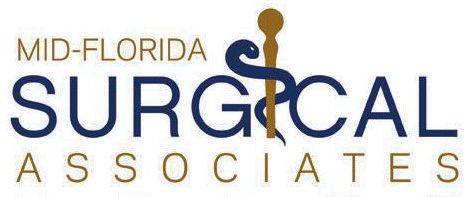
If you are diagnosed with a disease that requires more intense treatments, our doctors lead the way. Our physicians and staff will help guide you through the complex treatment planning. We work closely with several other specialties in the area to be able to offer the most advanced and appropriate treatment to our patients.
Our physicians are all members of The American Society of Breast Surgeons, credentialed and trained in minimally invasive biopsies as well as all surgical treatments of breast disease.

If you or a loved one have an issue with your breast or are concerned about having a breast disease, know that we have your back. Know that the doctors of Mid-Florida Surgical Associates are here for you.

JOSEPH M. ARMOTRADING II M.D., F.A.C.S JASON BOARDMAN M.D., F.A.C.S. JORGE FLORIN M.D., F.A.C.S. CHRISTOPHER JOHNSON D.O.,F.A.C.O.S., F.A.C.S. LUISANGEL A. RONDON M.D.,FACS OUR SURGEONS: FROM LEFT TO RIGHT OCOEE 407.521.3600 CLERMONT 352.243.2622 MidFloridaSurgical.com
1 in 8 women (12.5%) will develop breast cancer in their lifetimes.
TIME? SCREEN TOO M UC H






4 tips to combat digital eye strain at home and at work.








?
Story: Dr. Hanish Patel
YOU’REWHETHER WATCHING TECHNOLOGY LIGHTING
your favorite show at home or working on that big project for work, technology plays a big role in almost all aspects of our daily lives. While digital screens are a constant part of our work and play environments, they also are one of the largest culprits when it comes to eye strain. Dry eyes, fatigue, and
trouble focusing all can be signs that you’re experiencing digital eye strain, and although the majority of people can’t change the amount of time they spend using digital screens, they can change how they use them to prevent these symptoms.
These four simple tips can radically improve your overall health when using screens for work or for leisure:
ACCESSORIES
The lighting of your office or living room can have a big impact on your eyes when it comes to looking at a screen over a prolonged period of time. Working in dark environments with high brightness on your monitor can put a strain on your eyes as they deal with the high contrast between the visuals on the screen and the darkness of their surroundings. In order to create a comfortable viewing environment at home and at work, make sure there is sufficient lighting for your eyes. Another simple tip is to monitor your computer’s brightness levels to make sure it’s not too high or too low based on the ambient surroundings, which can put a strain on your eyes as well.
Eye care technology has become the latest trend to protect eyes young and old from the damages of blue light and increased screen time. Companies like BenQ are innovating new technologies in their products to help alleviate the negative side effects associated with digital screens and monitors. With monitors that can reduce blue light, eliminate screen flicker, and automatically adjust the on-screen brightness, you can sit back and let your monitor protect your eyes for you while you enjoy that new Netflix binge or finalize a presentation.
If you work in a shiny, reflective office or you love sitting on your computer by your favorite window at home, try applying a glare reduction filter to your screen to provide additional relief. Glare from sunlight or other light sources can cause strain on your eyes as you try to see through the reflective light to the screen. Another accessory that tends to go unnoticed is the screen itself. Whether it’s gloss or matte, you may find it worthwhile to compare which viewing experience is more comfortable for your eyes and reduces glare in your environment.
TIME
Americans spend more than 11 hours per day— nearly half the day—in front of screens, according to a 2018 Nielsen Total Audience Report. In order to reduce this time as much as possible and give your eyes a much-needed break, try spending some time outdoors or read a new book when you’re at home. If you’re at the office, try taking a coffee break or leave your desk for lunch. Even reducing screen time by an hour each day can have a large impact on your eyes and overall health.
DR. HANISH PATEL is a founding partner of Eye Associates of New York and the Center for Ophthalmic and Vision Research.
It’s inevitable that screens will be a part of most people’s everyday lives. But these simple tips and adjustments to your daily life can help you combat digital eye strain and the associated symptoms whether you’re at work or at home. If you’re still having issues with digital eye strain, make sure to talk to your optometrist about your experiences to ensure that there is not an underlying vision problem.
October 2019 35 ?
CHECK YOUR GET EYE CARE
TRY MONITOR
LIMIT YOUR SCREEN
Feel young again.


















Dr. Fernando Serra of Central Florida Plastic Surgery is a board certified plastic surgeon and specializes in all types of cosmetic surgery including breast, body and face enhancements. He is especially skilled at creating aesthetically beautiful, natural results using some of the most exciting and innovative surgical techniques.

With over 20-years in The Villages, Dr. Serra personally discusses and attends to your needs with oneon-one appointments and procedures directly with him. Dr. Serra strives to provide the unique, natural-looking compliments you desire to help you feel more attractive, comfortable and confident.


















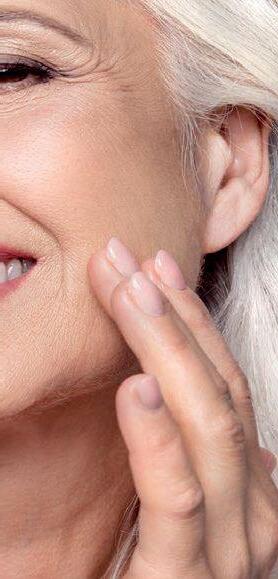

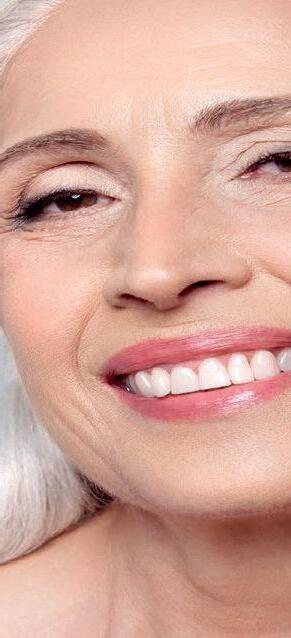
Boost Your Confidence. | Refresh Your Image.
CENTRAL FLORIDA PLASTIC SURGERY 910 OLD CAMP ROAD, SUITE 142, THE VILLAGES 352-259-0722 DRSERRA.COM
ASK THE
October 2019 37
Healthy Living has brought together a number of medical experts to answer questions about various health issues. Find your answers here from the dedicated health professional in our area. Paid promotional feature
WHAT ARE THE BENEFITS OF ROBOTIC SURGERY AND HOW DOES IT IMPACT PATIENT RECOVERY?
Robotic surgery came about, obviously, with technology, with new inventions and leaps forward. Anytime you do a hip surgery or knee surgery, one of the key factors is alignment. When you traditionally started doing alignment, it was just rough, where you estimated the appropriate alignment. As instrumentation improved, you could determine interoperative, during surgery, with basic guides using patient landmarks. Robotics is a step forward. Basically, the purpose of robotics in regard to orthopedic surgery is to allow more reproduceable, precise
alignment. In surgery, instead of saying, “Well, this looks pretty well-aligned,” you can say, “OK, I’m going to put this in at 3 degrees or 4 degrees or 5 degrees.” It’s just a lot more precise alignment, and if you have things more precisely aligned initially, then you’re going to have fewer potential complications for malalignment, which, particularly when you talk about partial knee replacements, is one of the factors that led to high numbers of failures. If you have fewer complications, it’s going to give the patient a better opportunity to have a successful recovery.
HOW CAN CONSERVATIVE APPROACHES TO ORTHOPEDICS KEEP YOU ACTIVE?
Many doctors, if you come to them with a knee problem, they’re going to automatically say you need the full knee replacement or you’re going to need this or that. Sometimes, a conservative approach determines that instead of a full knee replacement, maybe the patient needs a partial knee replacement. I try to individualize what I recommend for any patient, so if I recommend a partial knee replacement, that is going to facilitate a much quicker recovery than to have a full knee replacement in the average person.
YOU’RE ON THE CUTTING EDGE OF ORTHOPEDIC SURGERY FOR OUTPATIENT TOTAL KNEE REPLACEMENTS. WHO ARE IDEAL CANDIDATES FOR OUTPATIENT PARTIAL OR TOTAL KNEE SURGERY AND WHAT ARE THE BENEFITS?

We’ve been doing outpatient partial knee replacements for years. We have an older population in this area, so I would say it’s not for everyone. I’ve had a number of patients over the years go home the following day. It really depends on a few factors: a patient has to be very active, they have to have excellent home support, so if they live alone then they’re probably not a
good candidate. Usually it’s patients who have minimal past medical history of anything significant. So, you don’t want a patient who has diabetes, high blood pressure, who is overweight. We also have to have a good, supportive team: physical therapy, nursing care.
The outpatient total knee replacement is a program I have been working on about three years. We’re starting
to get more patients who request that and, to be honest, it really depends upon that particular person. But we have now assembled appropriate support staff so we can offer outpatient knee replacement, outpatient hip replacement or overnight stay. The average length of stay is only a few days. Most patients go home on the second day; some go home on the day after
Dr. Donald Perry, M.D.


38 lakehealthyliving.com ASK THE
ORTHOPEDICS
Q. Q. Q.
surgery. For select patients that I think it is reasonable after discussing and going over the potential options, if they want to go home the same day, that is an achievable goal.
The biggest benefit is going home the same day. Some people do better at home. We try not to keep people in the hospital any more than necessary, but I think that when patients go home sooner, they tend
to be more active because, obviously, if you’re in the hospital, you’re not walking around to go to the refrigerator or doing other tasks or activities that you might do at home. A lot of that depends on the patient’s individual situation. People want to be home in their own surroundings, so that is the primary benefit.
A lot of people put off knee or hip replacement because they don’t want to
be in the hospital, so if we can do anything to safely minimize the hospital stay, I think that it’s probably a good thing. Hospital stays are very costly and may not be necessary. With that being said, most of the patients probably would benefit from being in the hospital at least a day or two.
I try to individualize the procedure and the length of stay or outpatient-versusinpatient to the individual
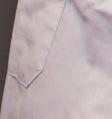

patient. It really is on a case-by-case basis.
FOR MORE INFORMATION
AdventHealthOrthoWaterman.com
352.559.9343

October 2019 39
OCCUPATIONAL MEDICINE


Occupational medicine focuses on the health of employees, their ability to perform the work required, and all aspects of the workplace, including physical, chemical, biological, and social environments.
Gregory S. Krivonyak, MD, MSPH, medical director of Occupational Health Services at Leesburg Regional Medical Center (LRMC), is the only board-certified preventive medicine physician specializing in occupational medicine in Lake County.

Occupational Health Services at LRMC, which is affiliated with Central Florida Health, offers drug screenings, hearing tests, pre-placement medical evaluations, lung function testing, breath alcohol testing, Department of Transportation and employment physicals, prevention vaccinations, surveillance testing, and workers compensation injury evaluation and/ or treatment.
“My area of medicine is anything pertaining to the work or the environment of workers,” Dr. Krivonyak says. “We even work with local orange juice manufacturer Cutrale, whose employees must be ed for SCUBA diving, and testing lung function goes along with that.”
Dr. Krivonyak says an occupational physician can also help an employer when

there is concern about their employee’s behavior or if the employee is returning to duty after being off for days or weeks. With this evaluation, the company can rest assured the employee is fully capable of doing the work expected.





“Whenever someone experiences illness or injury related to work, such as a slip and fall, a neck injury, someone who feels sick due to poor air quality, or a chemical spill or exposure, I can help with that,” Dr. Krivonyak says. “I can also evaluate job sites for hazards before work begins or provide an evaluation after there has been an injury.”
Preventive medicine occupational physicians also work closely with industrial hygiene or safety specialists on company sites. “I help find ways to avoid injuries on the job and I work with companies who might be having problems with absenteeism.”




Absenteeism can create great stress and possible financial complications for employers. Dr. Krivonyak can evaluate the situation and provide guidance on reducing or eliminating the problem. Another of his areas of expertise is designing safety programs for companies or working on wellness programs to help employees enjoy better health.
Practicing preventive medicine in the workplace is another way to ensure

efficiency and productivity with employee safety at the forefront.




The Occupational Health Services Department is located on the campus of LRMC and is open Monday through Friday from 8 a.m. until 4:30 p.m. Appointments are available, however walkins are welcome.
FOR MORE INFORMATION
Occupational Health Services Leesburg Regional Medical Center 550 Dixie Ave., Leesburg 352.323.2273

ASK THE
Q.
HOW CAN AN OCCUPATIONAL HEALTH PROGRAM SERVE YOU AND YOUR EMPLOYEES?
Dr. Gregory S. Krivonyak
WHEN SHOULD SOMEONE USE AN URGENT CARE CENTER VERSUS AN EMERGENCY ROOM?
Generally, an emergency is a condition that may threaten an individual’s life or cause impairment. If your medical problem is life-threatening, call 911 immediately and care will be provided at the nearest emergency room. However, ER visits should be reserved for true emergencies. If you are experiencing chest pain, a heart attack, severe abdominal pain, or have been in a life-threatening accident, it’s best to go to the emergency room. A visit to the ER without an actual emergency can be costly and inefficient, and distract providers from providing service to individuals who truly need emergency care.
If you have a problem that is not lifethreatening, but you are concerned about your health state, visit the Urgent Care Center on the campus of Leesburg Regional Medical Center. Urgent care is meant to be used for those who cannot get in to see their regular physician
URGENT CARE




when immediate medical attention is needed. Our urgent care team treats minor scrapes, coughs, colds, cuts, abscess boils, sore throats, poison ivy, sprained ankles, and much more. Keep in mind, however, if you do present to the Urgent Care Center with symptoms of abdominal or chest pains, our team will quickly evaluate whether or not you should be transferred over to the emergency room. This happens several times a day and our professional staff is here to help.
Our Urgent Care Center is conveniently located on the main campus of Leesburg Regional Medical Center so that patients have access to whatever level of care they may need. The Center is staffed with board-certified physicians and a team of experienced clinicians. We take pride in providing fast service; most patients are treated and released within one hour of their arrival.
WHAT ARE THE MOST COMMONLY TREATED CONDITIONS AT YOUR URGENT CARE CENTER?
During the flu season and throughout wintertime, we see many patients suffering from flu-like symptoms. Getting your yearly influenza (flu) vaccine from the LRMC Urgent Care Center is a quick and convenient way to help protect yourself from the flu. By immunizing yourself, you also help prevent the spread of the fl many patients with sinus infections. These can be painful and take time to heal. Our caring and friendly team can help determine whether or not you have a sinus infection and recommend the proper treatment so you can start feeling better.
During the summer months, we see many patients with minor injuries, such as fractures and cuts which commonly occur when we are spending time outdoors, so be sure to stay up-to-date on the tetanus vaccine in case you get a cut.
WHAT SETS YOUR URGENT CARE CENTER APART FROM OTHER LOCAL PROVIDERS?






The Urgent Care Center at LRMC offers splinting, onsite lab work, X-rays and special procedures. People are surprised when they learn we can provide orthopedic injections, such as cortisone. For patients who are being treated between the hours of 8 a.m. and 4 p.m., and pending insurance approval, we can send them over to the hospital for a CT scan or an ultrasound when needed. Most Urgent care Centers do not have that capability. We are open seven days a week from 8 a.m. until 8 p.m. including every holiday except Thanksgiving and Christmas.
FOR MORE INFORMATION
Urgent Care Center
Leesburg Regional Medical Center
550 E. Dixie Ave., Leesburg 352.323.2273
leesburgregional.org/urgentcare
Dr. Raj Kandavanam


ASK THE
Dr. Gregory J. Panzo: There’s absolutely no doubt that each of our accomplished and well-trained surgeons and specialists brings a unique expertise to the Mid Florida Eye Center network. From participating in national clinic research studies to advanced eye surgery techniques, we strive to bring the latest technology and surgical options to members of our community who need them most.
Although technological advancements play a major role in what we do at Mid Florida Eye Center each day, just being able to improve both the quality of vision and life for our patients supersedes that seemingly neverending quest for the newest piece of innovative technology.
Dr. Jeffrey D. Baumann: We’re constantly reviewing and adding new
Q.technology and surgical options to our practice in order to provide the most advanced eye care available to Central Florida.
We have been praised for building the first eye surgery center in the Lake County area in 1992 and owning and operating two, state-of-theart surgery centers with our four offices—including our 8,900+ square foot space in Wildwood adjacent to The Villages® Community—offering an unmatched level of complete eye care for our patients.
For me, the fact that we provide all major eye specialties, including three cataract surgeons, two glaucoma specialists, two retina specialists, an oculoplastic surgeon, and two corneal specialists under one roof is revolutionary. Our practice is the


only one in Central Florida where all our ophthalmologists have completed advanced fellowship training. But I am most proud of our practice restoring vision to hundreds of thousands of patients over the years. Our vision is clearly to make yours better.
FOR MORE INFORMATION
42 lakehealthyliving.com ASK THE OPTHAMOLOGY
Dr. Gregory J. Panzo (L) Dr. Jeffrey D. Baumann (R)
The first thing people need to decide is what breed they would like to purchase, and this should be done according to their lifestyle. People who live in apartments probably should get a lower-energy breed. You also need to decide what your expectations for companionship are going to be. Do you want a dog you can go out jogging with or do you want a dog that is going to wait at home for you and sit on your lap?
Then you need to decide whether you want to buy a purebred registered puppy or one of our designer breeds, which is usually a cross between two or more breeds. Once you decide on a breed, you need to research that breed, not only for its behavior and your expectations, but also for health issues that genetically run in that breed. A good source is your veterinarian, such as the veterinarians at Belleview Veterinary Hospital. Speak to your veterinarian about your desired breed and they can give you some good techniques or questions to ask the breeder.
Now it’s time to research your breeder, and that may involve going to the internet or social media. Remember, not everything you read there is true, but it’s a tool that can be used. Ask the breeder for references, such as other families that have purchased animals from the breeder and the breeder’s veterinarian. Ask their veterinarian about any health issues their dogs may have and make sure they’re cared for properly. Visit the puppy and its environment to see the living conditions and health of the puppy.







Do not purchase a puppy without a Florida state health certificate. The health certificate is not only going to let you know that the puppy was physically checked out by a veterinarian before the date of purchase, but it will also guarantee a warranty within the statutes of the pet lemon law. It’s illegal for breeders to sell a puppy without a health certificate in Florida, and without one, you also have no reconciliation if there’s a problem.

When a veterinarian issues a health certificate, it means the puppy is in good health and fit for sale, it’s free of intestinal parasites and received its first set of vaccines and a deworming. Further vaccines will be needed, usually within the first two weeks of purchase.
The doctors and staff at Belleview Veterinary Hospital can help guide you through this process to make sure you wind up with a healthy, happy puppy.



FOR MORE INFORMATION

































October 2019 43
Dr. Cara Erwin-Oliver
Q.
One of the most common misconceptions in cancer treatment is that all anti-cancer drugs are chemotherapy. In fact, over the last ten years treatments have incorporated “targeted therapy” and immunotherapy to allow patients to experience better outcomes and less side effect profiles. Traditional chemotherapy is the use of chemicals to stop cells from undergoing their natural division process (cancer cells do at a rapid rate). Unfortunately, these chemicals produce a significant amount of collateral damage including hair loss, nausea/vomiting, neurologic damage, and decreased blood counts. The decrease in blood counts
WHAT IS IMMUNOTHERAPY AND HOW IS IT USED TO TREAT CANCER?
immune or defense cells of the body, putting patients in danger of life-threatening infections. Targeted therapies are drugs that are designed to “target” a specific malfunction in the cancer cell which drives the cell to replicate and travel outside of its natural environment. Immunotherapy are drugs which harness the patient’s own immune system to identify and/or attack the cancer or local environment of the cancer. Interestingly, some classes of immunotherapy agents are designed to increase the immune systems activity and may result in a hyperactive response to the patient’s own body.
Immunotherapies have allowed us to treat many different types of cancer with the same agent. For instance, the checkpoint inhibitors such as nivolumab (Opdivo®) and pembrolizumab (KEYTRUDA®) are an intravenous medications approved for multiple cancers such as non-small cell lung cancer, melanoma, several gastrointestinal cancers, certain types of breast cancer, liver cancer,
Jennifer L. Cultrera, MD

and kidney cancer. This class of drugs does not actually hit the cancer cell itself, but instead a specific target called PDL-1 or PD receptor. These proteins tell the patient’s immune system to “move along” past the cancer cell by disguising itself as one of the patient’s healthy normal cells. Checkpoint inhibitors are antibodies, a protein that the body uses to activate the immune system, that disables PD receptor or PDL-1 thereby removing the “shield” around the cancer cell and allowing the body’s defenses to recognize and react/kill/disable the cancer cell anywhere the immune system reaches. Unlike chemotherapy, immunotherapy many continue to work even after administration of the agents are completed. The immune system “learns” to identify the cancer cells and creates a lifelong memory cell to help activate the immune system again should the same cancer cell appear in the body. Nivolumab and pembolizumab are not the only agents in this class and there are ongoing clinical trials around the world investigating novel strategies to attack cancer. Utilizing these therapies, certain cancers, such as stage IV lung cancer measured a patient’s overall survival in months only 5 years ago and is now measured in several years with a good quality of life.
Immunotherapy does have adverse effects that both patients and their team of physicians should understand. As the immune
system is stimulated to react against the cancer cell, the same can happen against normal cells of the body, especially if the patient already suffers from an illness where the immune system is already activated (such as autoimmune disorders, i.e. Rheumatoid Arthritis, Lupus, or Psoriasis). Side effects will happen in a minority of patients, but if they occur can result in rash (dermatitis), vision changes (retinitis), bone pain (arthritis), breathing difficulties due to lung inflammation (pneumonitis) and other effects on the body. It is difficult to predict who will suffer from this and patients are watched closely in conjunction with other members of their medical team should side effects occur.
Although by themselves immunotherapy may not be the silver bullet in our cancer treatment arsenal, new combinations with chemotherapy, targeted therapy and even vaccines using the patient’s immune system exposed their specific cancer are being investigated and used on a daily basis. Through this research we are continuously advancing the science of personalized cancer care.
ASK THE ONCOLOGY World-Class Medicine. Hometown Care.
FOR MORE INFORMATION Visit FLCancer.com


























































352.259.8599 | WWW.PLASTICSURGERYVIP.COM | 607 CR 466A, FRUITLAND PARK YOU KNOW US AS MESOS, YOU’LL LOVE US AS... DANNY SOARES, MD DOUBLE BOARD-CERTIFIED FACIAL PLASTIC SURGEO N L ARRY BLEVINS, PA, ASLMS FELLOW & MASTER INJECTOR TRAINER R OBERTO MENDEZ, MD, FACS BOARD-CERTIFIED PLASTIC SURGEON SERVING THE VILLAGES COMMUNITY FOR OVER A DECADE | SCHEDULE YOUR FREE CONSULTATION TODAY! GALDERMA 2018 PREFERRED EXECUTIVE MERZ 2018 TOP INJECTORS A er Before A er Before


















































































46 lakehealthyliving.com DON’T LET FALLS PREVENT YOU FROM BEING ACTIVE THIS FALL! UnovaHealth.com GETTING YOU MOVING THE WAY YOU WERE MEANT TO MOVE! Orthopaedic Clinic M-F 8:30am-4:30pm 352.973.4070 Urgent Care M-F 8:30am-4:30pm 352.460.1652 10700 US HWY 441, LEESBURG OPEN DAILY 11AM-9PM 352.253.2442 CVINNIES.COM BEST OF THE 2019 HOTLIST
Post-surgical problem






A common complaint following surgery is constipation. Dr. Constance Chen, plastic surgeon and breast reconstruction specialist, suggests ways to prevent postsurgical constipation or minimize its effects:
• Ask your surgeon if it’s possible to avoid or reduce using opioids for pain control; substitute with acetaminophen, nonsteroidal anti-inflammatories (NSAIDs), gabapentin and other non-opioids.

• Follow your doctor’s instructions about what and when to eat. When

• Snacking or eating small, frequent meals may promote digestive activity.
• Avoid foods that promote constipation like dairy products, processed

• Drink lots of fluids. Stay well-hydrated to promote bowel movements

• Start moving around as soon as your doctor gives you the OK, even
• With your doctor’s approval, take a stool softener, usually one that includes docusate sodium, to draw water from the intestines and moisten the stool, making it easier to pass. Do not take or use over-the-counter laxatives, probiotics, enemas or suppositories without talking to your
Source: PR Newswire
47
“There’s no timetable or formula for determining when your bowel habits have returned to normal,” Dr. Chen says. “If you have a history of constipation, it’s a good idea to bring it up with your doctor to discuss strategies to minimize the effects.”
devastating. Fighting that cancer is worse. Patients know the misery of countless doctor appointments, fatigue, and the nausea of chemotherapy. What could be worse?
Treatment-induced oral mucositis. These are mouth sores that make chewing and swallowing so painful that patients often are unable to maintain adequate nutrition and hydration.
The skin that lines the oral cavity, or oral mucosa, comprises cells that divide and are replaced quickly, making it a resilient and sensitive barrier. While it can withstand normal forces like chewing, swallowing, and the









MMagical



UTHWASH
There’s hope when cancer treatment leaves patients with a bad taste—and pain—in their mouths.
burden of chemotherapy and radiation. Many treatments target rapidly dividing cells regardless of whether they are healthy or cancerous. No wonder cancer treatments often ravage the mouth.
Nearly 40 percent of chemotherapy and 95 percent of radiotherapy patients develop oral mucositis according to the National Center for Biotechnology Information. It often begins in the fi week of treatment and can last several weeks after it ends. The sores range from mild to severe and appear as red patches or pus-filled ulcers, making it tortuous to eat and swallow, interrupting
treatment, and jeopardizing the outcome. Mild cases may cause dry mouth and oral malodor.


There are presently no























Cancer patients should use oral rinses that don’t contain alcohol or irritating chemicals.














“Using the wrong mouthwash is like spraying lighter



little device that breaks up
 Story: Dr. Alisa Cooper
Story: Dr. Alisa Cooper
48 lakehealthyliving.com
fuel on a fire,” adds Frank, a cancer survivor treated for a deep neck tumor. “With the right rinse, you can get some relief from the inflammation caused by radiation damage. Just make your mantra: swish, rinse, gargle, spit.”
A mouth rinse gaining popularity within the cancer community is CloSYS unflavored mouth rinse. Known for conquering bad breath and alleviating dry mouth, its reputation for easing oral mucositis is expanding. Dentists, hygienists, and oncology nurses are recommending it, and grateful patients are sharing their personal experiences with others ghting the good fight.
A 58-year-old breast cancer patient developed mouth sores five days after beginning treatment.
“I endured the pain of eating only to maintain my stamina,” she recalls. “My oncology nurse told me about CloSYS, and I began brushing my teeth three to four times a day and rinsing between brushings. Things



got better as the weeks went by, and I eventually could chew and swallow without pain. My mood improved and so did my determination to beat this thing.”





A 46-year-old with Hodgkin’s lymphoma developed oral mucositis within four days of her first chemotherapy treatment.
“I could not eat anything dry, hard, crunchy, salty, or spicy. And every time the sores began to heal, it was time for another treatment and they would flare up again,” she says.

Along with the sores, she developed dry mouth and bad breath. Her dentist recommended CloSYS unflavored mouth rinse. She explains, “Right away, my mouth felt moist, and within three days my breath was fresher.” Although she still developed sores after treatments, they were milder and healed up quickly. “It made my cancer journey bearable.”
A 65-year-old dental hygienist with breast cancer began using CloSYS

prophylactically the first week of treatment. “I only had a few sores on my palate and basically ate anything I wanted. Besides brushing and rinsing, I added the CloSYS rinse to my Waterpik.” Routinely recommending CloSYS to her own patients, she laments that oncologists are largely unaware of it. “They need to go beyond recommending saltwater and sucking on ice chips.”
The oral mucositis suffered by a 58-year-old with ovarian cancer was so







severe that her treatments had to be spaced farther apart than her oncologist initially recommended. She had sores all over her gums, putting several teeth in jeopardy. Luckily, her dental hygienist recommended the products above, and, within three months, the gingivitis subsided.
“Actually,” the patient recalls, “my gums stopped bleeding within the first month.” She adds, “I had to brush my teeth every two hours, but that kept the chemo taste away long enough to eat and drink, and I didn’t lose any teeth. I am grateful for that.”
Oral mucositis, a prevalent and devastating side effect of chemotherapy and radiation, compromises physical and emotional well-being. Patients consistently stress the importance of extreme oral hygiene in sustaining the mouth as a lifeline for fighting cancer. Many also agree that products like this have been their salvation. They hope oncologists soon catch on.
ABOUT THE WRITER → Dr. Alisa Cooper is a c of experience helping others achieve and maintain optimal health and well-being. She creates health presentations, books, blogs, and articles. Visit liveandbewell.com.
‘‘ Things got better as the weeks went by, and I eventually could chew and swallow without pain. My mood improved and so did my determination to beat this thing.”
October 2019 49
—58-year-old breast cancer patient
Prepping makes it easier
New contributor and chef Dini Klein provides a preparation program for simple home-cooked meals.
Story: Leigh Neely
There are few people who would say they don’t have busy lifestyles these days. Unfortunately, one of the first things to suffer neglect is family mealtime. It seems easier to stop and grab a to-go bag on the way home. However, chef and media personality Dini Klein has found a way to make preparing delicious home-cooked meals easy, and she is a new contributor to Healthy Living
Dini is a busy working mom with two children, and her idea of Prep + Rally came from wanting her own household to be more prepared.
Having worked with popular brands like Walmart, Daisy, Popsugar, Weight Watchers, Pinterest and many others, Dini has shared her ideas to a worldwide market. She says her heart is always in the kitchen, which, of course, is considered the heart of the home.
“Working as a personal chef for years, I would cook staple dishes for my clients every week to get them from Monday through Thursday,” Dini says. “After a long, exhausting day cooking for clients, I needed to feed my own family—and that was the last thing I wanted to think about after working on my feet all day. It was time to start implementing meal prep and weekly menus.”
She came up with these workable ideas for herself and the community she had gathered on social media. The
process begins with using the items you already have in your pantry. You create delicious, healthy recipes, and then take the leftovers and repurpose them so there are no reruns at dinner.
THE THREE MAIN STEPS IN THE PROGRAM ARE: SHOP – Download PDFs from the weekly email to get your groceries ready for prep day.
PREP – What Dini developed is everything you need to make your time in the kitchen easier and better. On her website, diniklein.com, readers will find understandable shopping lists with printable PDFs that provide instructions for simple cooking and preparation of meals. But she doesn’t stop there. These dishes then become creative lunches or delicious leftovers with a new touch.
RALLY – Save money and reduce the amount of food you waste by doing a week’s worth of menus in one setting. You can enjoy dinner with everyone else with no worries about adding to the stress of your busy day.
Of course, everyone knows doing any project is easier if you’re ahead of the game with planning. Dini has these suggestions to help make the time in the kitchen efficient and effective:
• Start with a clean kitchen and clean as you go so you never get overwhelmed.
• that use similar ingredients so you don’t need to buy as much.
• Make sure you have a nice balanced meal consisting of starch, vegetables and proteins. You can even throw in some sweet treats if you like.
• Cut corners. Buy items to save time such as pie dough, pizza dough, vegetable stock, egg roll wrappers and so on. You can even buy precut
• Buy only what you need for that week to ensure nothing goes to waste. And as always, shop once
• Place a garbage can near your workspace when prepping to save time running back and forth.
• Prewash (or peel, if applicable) all produce to save time.
• Set out all containers and cookware in advance so you don’t scramble.
Here are three of Dini’s favorite recipes that you can prepare for your family with ease. Look for upcoming recipes and ideas from Dini in Healthy Living.
50 lakehealthyliving.com
Make sure you have a nice balanced meal consisting of starch, vegetables and proteins.
CHEESY MUSHROOM, LEEK AND PUMPKIN GALETTE

Nothing screams fall more than “pumpkin.” This loaded pumpkin galette is a crowd pleaser, highly seasonal and fun for the kiddos to help assemble. It’s a Prep + Rally staple.
INGREDIENTS
15 OZ. pie dough (2 pie rounds) rolled into 10-inch circles
7 OZ. canned pure pumpkin puree (divided)
2 CUPS sautéed leeks and mushrooms (divided)
1 CUP roasted and cubed butternut squash (divided)
2 CUPS mozzarella (divided)
1CUP grated parmesan (divided)
1 egg, whisked to brush
DIRECTIONS
Place rolled-out pie rounds on parchment-lined baking sheets and spread half of the pumpkin purée on each round, leaving a 3-inch border around the edges. Top each round with 1 cup leeks and mushrooms and ½ cup squash. Season each with salt and pepper. Lastly, add 1 cup mozzarella and ½ cup grated parmesan to each and the fold up the edges creating a border to Brush with egg and bake at 400 degrees for 20 minutes until golden. Serve hot and bubbly galette with optional side salad to complete the dinner.
MEAT-LOADED PEA SOUP

Cozy up with a bowl of this comforting pea soup. The best part about this dinner is that it’s one dish that you can serve alongside a loaf of bread to make a complete meal. Now that’s the ultimate dinner.





INGREDIENTS

2TBSN oil
1 onion, small diced
2 STALKS celery, small diced
2 carrots, peeled and cut into a small dice
1 LB. dried green peas
1.5 LBS. boneless short ribs or flanken (2 large pieces)
6 CUPS vegetable or beef stock Salt and pepper to season

DIRECTIONS


In a large pot, sauté the onions, celery and carrot until softened, about 8 minutes or so. Add remaining ingredients and bring all to a boil. Lower to a simmer and cook covered for 1.5 hours, or until meat is falling apart. Remove meat from the pot, shred and put back in. Serve with fresh rustic bread. *If the soup gets too thick after storing, add additional water to thin out. Check out other great soup recipes in the latest “Soup and Stews eBook.”

TUNA MELT KHACHAPURI WITH ZAATAR AND POPPY SEEDS

Try this quick, easy and delicious recipe for a weeknight dinner.
INGREDIENTS
2 CUPS
2 CANS albacore tuna
2 BALLS pizza dough (store-bought) (44 oz.)
4 TSPN zaatar

2 TSPN poppy seeds
2 eggs beaten for brushing
4 eggs for baking
DIRECTIONS
Preheat oven to 475 degrees. In the meantime, make Mix together the cheese and tuna in a small bowl and set aside. To form the khachapuri, divide the dough into four equal pieces. On two pieces of lightly floured parchment paper, roll each piece of dough into
of the oval and spread out into vertical line. Fold top the center, and then twist either end of the dough similar Pinch end pieces closed to create a tight seal. You’ve formed your boat-like khachapuri. Continue with the remaining dough and
sheet. Press center down slightly with a spoon to create a well for the eggs will be added later.Transfer formed khachapuris on parchment paper to two baking sheets.
khachapuri. Brush dough with egg, and then top with zaatar and poppy seeds. for 9-12 minutes. Once golden and bubbly, open the oven and pull baking sheets halfway out. Crack one egg into each well and bake for an additional 3-4 minutes
Serve immediately.
October 2019 53
Dini Klein
Back exercises
with Sine Wallace
Owner of Wallace Fitness in Mount Dora
PLANK DUMBBELL ROW

1. Place both hands on a bench and get into a plank position.
2. Keeping your left hand on the bench, grab your dumbbell with right hand palm facing in.

3. Keep your back straight, core tight, neck in natural position, and elbow tucked in.
4. Engaging your back muscles pull the dumbbell up keeping your elbow in while you exhale.
5. Bring the dumbbell down as you inhale.
6. Repeat this to as many times as your program indicates for each side.
Sine’s Tip: Avoid sinking your back down as it may cause injuries. If unable to keep a good form with the plank, try using a bench to place your knee. Left knee would be on the bench; R hand would hold the dumbbell. Reverse for the other side.
Photos: Nicole Hamel
54 lakehealthyliving.com
SEATED HIGH CURLS
1. Set the height and the weight of the cables over your head.
2. Hold the handles palm facing you and kneel down or sit on a bench.
3. Keep your elbows up direction of the cables and close to your head.
4. Bring the handles over your head engaging bicep muscles while you exhale.
5. Extend your arms while you inhale.
6. Repeat this to as many times as your program indicates.
Sine’s Tip: Keep your shoulders down and elbows up. Your body will want to raise your shoulders and bring down your elbows. Resist breaking the form to prevent injuries to your neck.
WIDE-GRIP LAT PULL-DOWN


1. Set the height of the seat, knee pad and the weight of the lat pull down machine.
2. Grab the bar as wide as you can, palms facing forward. Bring your shoulders down and chest out.
3. Engage your back muscles and pull down the bar as you exhale almost touching your chest.


4. Extend your arms to starting position while you inhale.
5. Repeat this to as many times as your program indicates.
Sine’s Tip: Avoid leaning back excessively or rocking your body as you perform this exercise to prevent
October 2019 55
To stretch or not to stretch?
Stretching is one of the health and fitness industry’s most highly debated topics, with questions like: Should you stretch before exercising or after, or perhaps both?
How long should you stretch? How should you stretch? Is stretching even necessary?


Science has not provided an exact response. However, from my experience training people from all fitness levels and age groups, the proper stretching method at the right time can be beneficial.
The benefits of stretching include improved range of motion, injury prevention,

2 1 3 4
• PNF (proprioceptive neuromuscular facilitation) stretching:
increased flexibility, lower back pain reduction, and body alignment awareness. With proper stretching, you move better and remain much more flexible, which is very important as you age.
Before exercising, mild dynamic stretching is best since it helps warm up the muscles for the session. Static stretching is best postworkout because the muscles are warm and will allow for a farther stretch. It also helps reduce delayed onset muscle soreness. The key to a successful stretch is the proper method at the proper time. Happy stretching!
56 lakehealthyliving.com ABOUT THE WRITER →
• • •
Story:
STRETCHING FORMS:
BASIC































Boosting your immune system
Are oral supplements healthy or hype?
I see patients nearly every day who take one or, usually, more over-thecounter herbs, minerals or proprietary supplements, including such things as Echinacea, vitamin C, goldenseal, turmeric, green tea extract (read my warning on this one in the May 2019 issue of Healthy Living), garlic, zinc and an endless variety of proprietary supplement mixtures containing a dizzying number of herbs, minerals and more. All of these claim to improve health and prevent disease by “boosting” our immune system. Exactly what does that mean?
“Boost,” as used in medicine, is a weasel word; it sounds great but really doesn’t mean anything. Boosting our immune system conveys the idea that doing this is a good thing that will make us healthier and more resistant to illnesses and disease. Is this true?
Our immune system comprises a wide array of tissues, such as the spleen, lymph nodes and thymus gland. It encompasses many cell types, such as lymphocytes, plasma cells and white blood cells. It includes chemical mediators in our blood, such as histamine and complex proteins known as antibodies, as well as an intricate network of complex chemical reactions. All of these work in a coordinated fashion to protect us from everything from bacteria and viruses to cancers. Imagine the most complex, intricate system yet devised by human intelligence and ingenuity. Our immune system makes that look positively simple.
We have barely scratched the surface of understanding it. Our immune system can recognize our own unique body from any “other.” It detects invasion of our body by foreign agents and mobilizes our defenses to isolate or destroy the invader. A single exposure to a bacterium, virus or foreign protein can produce a “memory” for life so any future exposure to that agent will trigger a rapid immune response. This is the basis for the effectiveness of vaccinations for a variety of diseases. Our immune system can even kill cancer cells. Left to itself, in an otherwise healthy individual, it is extraordinarily effective.
To appreciate how important the immune system is, look at someone whose immune system has ceased to function
58 lakehealthyliving.com
Story: Dr. Richard T. Bosshardt
effectively; someone, say, like a patient with HIV/AIDs. Untreated, such patients die quickly from infections or cancer, including infections and cancers rarely seen in patients with healthy immune systems. Cancer patients on chemotherapy often have a suppressed immune response and are subject to infections they would otherwise be able to resist with ease.
We also know what happens when the immune system is more active or sensitive than normal, in other words, boosted. We have an entire category of diseases that result when this happens. We call them autoimmune disorders and they include such terrible diseases as rheumatoid arthritis, lupus, scleroderma, Sjogren’s, temporal arteritis and a host of others, all of which are poorly understood and nearly all of which are incurable. In many of these conditions, the immune system actually attacks the normal tissues in the body of the individual. Allergies and anaphylaxis, which can be fatal, also are due to a hyperactive immune system.
The purveyors of herbs, supplements and other nostrums to “boost” the immune system never explain
exactly how these work. Ads promote these with little evidence beyond testimonials, which are always suspect, in large part because of the placebo effect and because testimonials reflect subjective impressions, not evidence. What studies there are typically are flawed, clearly biased or wrongly interpreted to support the effectiveness of the particular product. Taking supplements you don’t need basically gives you expensive urine as your kidneys will eliminate anything in your blood that is not needed.
It has not been demonstrated that, in an otherwise healthy individual with a normal immune system, taking any oral supplement makes this function
better in some way. If this were so, physicians would use such products on patients whose immune systems are compromised in some way. Medicine’s ability to “fix” the immune system is a crude, dangerous and complicated affair. Some patients, such as those with leukemia, can be cured only by destroying the cancerous immune system completely with radiation or chemotherapy, then restoring it from scratch using grafts of bone marrow, which contains all of the cells of the normal immune system. When these fail, as they sometimes do, death usually is the end result.
The best way to “boost” your immune system is to eat a healthy, clean diet of high-quality protein, healthy fats and plenty of fresh fruits and vegetables; get plenty of rest; destress your life as much as you can; get regular exercise; and avoid unhealthy habits like smoking, drug use and excessive alcohol consumption. It really is that simple, but patients continue to look for that magic bullet, and manufacturers of supplements are happy to supply them at a price.
ABOUT THE WRITER → Dr. Richard T. Bosshardt graduated from the University of Miami School of Medicine in 1978. He
Our immune system can even kill cancer cells. Left to itself, in an otherwise healthy individual, it is extraordinarily effective.

One of those is providing therapy, it’s as effective as face-
















61
understanding to autistic children















Imagine taking a trip to a foreign country. On one particular excursion, you become separated from your translator friend who was helping you by conversing with the locals. As you search for your friend, an lls your nose. It makes you feel extremely nauseated. Some people next to you are also talking so loudly that you can’t concentrate. You try to ask for help or explain your problem, but no one understands

This exact scenario may not be common, but the resultant feelings are all too familiar to a person with autism spectrum disorder, or ASD. People with ASD often cannot communicate effectively with others and can become overwhelmed by sensory processing difficulties. For this reason, normal, everyday events can present signifi challenges for people with ASD. Even a trip to the supermarket can be daunting. So, what can be done to help individuals with ASD overcome these challenges? A lot! It depends on your role in their lives. If you’re a parent, teacher, or therapist, writing a social story is a fantastic option. This is a tool that prepa


Simply knowing what to expect beforehand reduces anxiety, and many of the undesirable behaviors caused by it. As speech-language pathologists, we found ourselves constantly writing new social stories to help children in our caseload cope during community trips and new situations. We spent so much time writing them that we developed our own series, Lou Knows What to Do, to help people tackle common areas of difficulty, such as food allergies, doctor’s visits, and trips to supermarkets or restaurants, for children with ASD. Still, the need for new, individualized social skills stories continues to arise, and knowing what to include in the text can make or break the experience. rst time, remember to:
• Use visuals whenever possible; the end.







child understands.
What if you aren’t an active member in the child’s life but want to help? Acceptance and understanding can go a long way. When you see a parent in the grocery store trying to help their child who is melting down from sensory overload, offer to help. If they decline assistance, allow them the space they need. Parents and children alike do not want spectators during this moment. Actually, no one wants extra witnesses during their most difficult times. Sometimes compassion is all people want. For business owners, offering a quiet room for everyone to collect themselves is always a much-
Whether you are a parent, teacher, therapist, or stranger, anyone can be helpful in the life of a child with autism. Even if they can’t verbally say, “Thank you,” know that your efforts are appreciated.
Kimberly Tice provides intervention in language, learning, literacy, and feeding to people with autism spectrum disorder pathologist and augmentative and alternative communication consultant.



October 2019 63
Changing Seasons SERIES
March 3, 2020
Palliative Care & Butterfly Project & Planned Giving


May 7, 2020

Wound Care & National Stroke Month & IRA Rollover & Life Insurance




August 4, 2020
Breast Cancer & Prostate Cancer & Protecting Your Assets

November 17, 2020

Dementia & Skin Cancer & Growing Retirement Funds





12:00 p.m. - 2:00 p.m. Free seminar series includes lunch!

AdventHealth Waterman






Mattison Conference Rooms
(located directly across from the café on lower level of the hospital)

Seating is limited; reservations required by contacting the Foundation at 352.253.3270 or joan.ordazzo@adventhealth.com
Media Sponsor: Sponsors:
64 lakehealthyliving.com
DISCLAIMER: THE VIEWS AND COMMENTS EXPRESSED BY THE SPEAKERS ARE THOSE OF THE INDIVIDUAL AND DO NOT REFLECT THE OPINION OF THE HOSTS OR SPONSORS OF THE EVENT. TOPICS AND SPEAKERS SUBJECT TO CHANGE.
Jill Sylvester is a licensed medical health counselor and wellness coach. She is also the author of “Trust Your Intuition,” which features ways to transform anxiety and depression into better mental health. Here are four steps she offers clients to help them



Focus on day-to-day decisions such as food choice or minor requests you’ve received. Check in with
When you’re operating on autopilot, it’s easy to be swayed by other people’s choices and to let the voice of the inner gremlins steering you in the
Do you feel expanded, open and relaxed at the prospect of doing something, or tight, agitated and restricted? The latter points to saying “no…”

Practice all of the above. The more you do it, the









Over time you will see that in trusting your intuition, you will be able to act and choose from


65
The stress antidote


A cure is needed to end an addictive cycle.



The number of statistics linking stress to disease





the body and mind that it begins to facilitate the growth of mild, solvable problem to blossom into an incurable illness. Most drugs prescribed for various stress-related problems feed the problem. If people have inflammation in their knee causing mild pain and they take a pain reliever, they are masking the problem. This means they will continue to walk and exercise on a knee that needs treatment. Since the pain is masked, they usually will make the situation worse and cause the inflammation to increase until they need knee replacement.
When we mask symptoms of stress, whether physical or emotional, we do nothing to solve the underlying problem. Therefore, we continue to do and think the way that created stress. As our level of stress increases, our need for larger doses of medication or even additional medication grows. Just like the knee treatment that focused on symptoms but exacerbated the problem, those who take a symptom-based

Once the mind and body adapt to function under stress, we lose our ability to function without stress. In fact, our body and brain become addicted to the “stress hormones,” and like any addiction, we don’t know how to live unless we feel stress. For example, the great majority of people with type A personalities do not feel they can be productive unless they’re under stress.
This can begin in school: you put off writing a paper until the last night and your emotions are raging, so you stay up all night overindulging in caffeine and you finish your paper just in time. So, you begin to think that it was, in fact, the stress that brought about your productivity. One only has to do this a few times to become addicted to this neurological process. They eventually will reach a place where they will create
66 lakehealthyliving.com
stress where there is none so they can feel creative. This same process happens in relationships and every other aspect of life.
When we remain in stress for long periods, we become sympatheticnervous-system-dominant, which means we stay in fight-or-flight mode all the time. This can cause high blood pressure, acidic pH, sleep disorders, indigestion, and an endless list of emotional and physical health problems. Sympathetic dominance is the breeding ground for chronic disease.
ght-or-flight mode of the sympathetic nervous system is pure survival mode. When we shift into this survival mode, nothing in our body or mind is working to keep us healthy; everything is driven by the need to survive.
ght-or-flight mode, the blood no longer nourishes the organs; it ows to the extremities preparing us to instantly run or fight. Every minute ght or flight is a minute your body is not nourishing or protecting the ghting disease, or healing disease or infection. All of this tends to give rise to inflammation, which is just one more phase in the path of chronic disease and death.
I have known hundreds of people who after extended periods of stress began to manifest a deadly disease. Often, they are so confused, they reason, “I eat right, I exercise, I drink healthy water; how did this happen?”
The answer is simple. The diseases that kill us are given birth during the times of stress, when we are in fight or flight. When we interfere with the natural healing process, we give sickness the opportunity it needs.
This should lead us all to answer the question, “Is the thing about which I’m stressing worth risking my life?”

The answer is always an emphatic “No!” Therefore, all of us should surrender the “right” to be angry, jealous, fearful, unforgiving, and so overindulgent that we live in stress about anything or anyone!
Entering into fight or flight obviously begins a surge of hormones that cause one to feel stressed and overwhelmed. This stress not only produces a negative, health-destroying effect on all
























































of our bodily functions, but it also takes a toll on our emotions.


Once we allow stress to grow to a degree that it is affecting our emotions, it now affects our relationships. Under stress, the way we interact with others changes. It may be the tone of voice, the expression of frustration, or the way we look at others while talking. When we consider that as much as 85 percent of all communication is nonverbal, we are intimidating, insulting, or provoking anger with the people we live with, work with, and love.

When we have reached a stage where stress is affecting our communication, we enter a syndrome of creating more external/relational stress, which creates more internal stress. That multiplies over and over again until we either implement the stress antidote or venture down the long dark path of destroying our health, relationships, income, and emotional stability.
The stress antidote is peace. One of the least-pursued emotional traits of the 21st century is probably peace. In my upcoming articles, I will help you discover the biological, emotional, and spiritual journey into a life of peace. I will share exercises that will give you the power to not only break free from stress but also break out of a lifestyle of stress. We will start with an exercise that will work within 15 minutes.
October 2019 67
ABOUT THE WRITER → Jim Richards, Ph.D, Th.D, OMD, has pioneered faith-based programs in natural medicine and personal development. His bestselling books, audio programs, leadership training, conferences, and consulting have influenced millions of people all over the world to discover how to experience life at its best.
Disclaimer: This article is not intended to be medical advice.
do nothing to solve the underlying problem. Therefore, we continue to do and think the way that created stress.
Hometown Health

Good Things for Those Who Wait

Hometown Health TV is celebrating its 11th season of multi award-winning health and medical education, information and entertainment in physician offices throughout Lake County and The Villages, in 200,000 cable TV homes and on the web.
To see if your practice is eligible for our speciality-exclusive HHTV network, call 352-801-7106 or email Info@HometownHealthTV.com for a video demo.
® AFTER MORE THAN 120 EPISODES AND 2500 STORIES...
Learning what you need to know













You don’t always have to have a fi the financial advice you need. You may be unaware of the services offered by institutions you already use. Here are some places to ask for free fi









• Your bank or credit union. Bankers know how to listen to you and analyze
Source: magnifymoney.com


• • •
DAVE SAYS

Advice
LONG-DISTANCE LANDLORD?



















Dear Dave,

My husband and I are active-duty military stationed outside Washington, D.C. We’re completely debt-free and

plan, but last month our paid-for rental house in Florida burned down. It was empty at the time, so no one was hurt, and we got a check from the insurance company for $165,000. We both plan to serve another nine years, and we know we could be moved around during that time. We love that area in Florida, though, and want to go back there one day. Do you think we should use the money to buy another place and rent it out until we’re ready to retire from
—Carrie
Dear Carrie,
Wow! I am so proud of you guys. You’re at the point where you’re living—and giving—like no one else. You have achieved financial peace!
Now, I love real estate. But it’s always a good idea to have your rental property near you. I wouldn’t buy a place in Florida if I lived in Washington, D.C., and there was a chance I could be reassigned pretty much anywhere in the world. I’d just scrape the lot where the rental house was, sell it, and invest that cash along with the insurance money.
Long-distance land lording is really tough. It’s stressful, and it adds an even bigger element of risk to the rental property equation. It’s not something I generally recommend. If it’s something you guys want to take a chance on, though, you’re certainly in the financial position to do it. Just remember to pay cash for the whole thing and, if possible, try to get a location where you’d both like to end up when your military careers are over.
Congratulations, you two! And thank you for your service to our country.
—Dave
COMBINE FINANCES IN MARRIAGE?
Dear Dave, Should my husband and I combine



 —Jenny
—Jenny
Dear Jenny,

If you want a quality marriage, the answer is yes. If you want a high probably of building wealth, the answer is yes.
How and where you spend your money is always a direct result of your value systems. When you plan your finances together, and you’re sharing your hopes and dreams, you’re sharing your goals for the future. So yes, married couples should combine their finances. They should combine their checking accounts and their decision-making on finances. You’ll make better, smarter decisions that way, and it instills communication in a marriage.
You know, when I first started teaching this stuff, I didn’t realize that. I told couples to combine their finances, not from a relational standpoint, but because it’s impractical to run two sets of books in a household. But it’s very hard to hit the same goals and make good things happen together when you’re living separate financial lives. Since then, I’ve become convinced this approach builds stronger finances and stronger marriages. Combine your finances.
—Dave

70 lakehealthyliving.com
ABOUT THE WRITER → Dave Ramsey is CEO of Ramsey Solutions. He has authored seven best-selling books, including “The Total Money Makeover.” “The Dave Ramsey Show” is heard by more than 13 million listeners each week on 585 radio stations and multiple digital platforms. Follow Dave on the web at daveramsey.com and on Twitter at @DaveRamsey.
on rental units and pooling
Let our Medicare experts help you find a plan that meets your needs
Attend a Florida Blue Medicare seminar in your neighborhood to learn more.

Get answers to your questions and find out about our new plans that provide the benefits that matter most to you.
Seats fill up fast, so RSVP today.
352-259-0666
11962 CR 101, Ste 303, The Villages, FL 32162
Conveniently located in Palm Ridge Plaza, within the heart of The Villages® community
Choose a convenient location near you:
LADY LAKE
Comfort Suites / The Villages® community
1202 Avenida Central
Tues, Oct 15- 10:00a & 2:00p
LADY LAKE
Comfort Suites / The Villages® community
1202 Avenida Central
Thurs, Oct 24- 10:00a & 2:00p
LADY LAKE
Comfort Suites / The Villages® community
1202 Avenida Central
Tues, Oct 29- 10:00a & 2:00p
LADY LAKE
Comfort Suites / The Villages® community
1202 Avenida Central
Thurs, Nov 7- 10:00a & 2:00p
We offer the BlueMedicare Classic (HMO) plan in your area. It has all the benefits you need, plus:
• $0 plan premium
• $0 copay for primary care doctor visits
• $0 copay for additional dental coverage
• Additional vision and hearing coverage
• SilverSneakers® fitness program
LADY LAKE
Comfort Suites / The Villages® community
1202 Avenida Central
Thurs, Nov 14- 10:00a & 2:00p
LADY LAKE
Comfort Suites / The Villages® community
1202 Avenida Central
Tues, Nov 19- 10:00a & 2:00p
WILDWOOD
Barnstorm Theater
2720 Brownwood Blvd
Wed, Oct 16- 2:00p
WILDWOOD
Barnstorm Theater
2720 Brownwood Blvd
Wed, Nov 6- 2:00p
THE VILLAGES® COMMUNITY
Waterfront Inn
1105 Lakeshore Drive
Thurs, Oct 31- 10:00a & 2:00p
THE VILLAGES® COMMUNITY
Waterfront Inn
1105 Lakeshore Drive
Tues, Nov 5- 10:00a & 2:00p
LEESBURG
Hampton Inn / Leesburg
9630 US 441
Wed, Oct 30- 10:00a & 2:00p
LEESBURG
Hampton Inn/ Leesburg
9630 US 441
Wed, Nov 13- 10:00a & 2:00p
For accommodation of persons with special needs at meetings, call 352-259-0666 Florida Blue Medicare is an HMO plan with a Medicare contract. Enrollment in Florida Blue Medicare depends on contract renewal. HMO coverage is offered by Florida Blue Medicare, Inc., DBA Florida Blue Medicare, an Independent Licensee of the Blue Cross and Blue Shield Association. Tivity Health and SilverSneakers are registered trademarks or trademarks of Tivity Health, Inc., and/or its subsidiaries and/or affiliates in the USA and/or other countries. We comply with applicable Federal civil rights laws and do not discriminate on the basis of race, color, national origin, age, disability, or gender. ATENCIÓN: Si habla español, tiene a su disposición servicios gratuitos de asistencia lingüística. Llame al 1-855-601-9465 (TTY:1-877-955-8773). ATANSYON: Si w pale Kreyòl Ayisyen, gensèvis èd pou lang ki disponib gratis pou ou. Rele 1-855-601-9465 (TTY:1-800-955-8770). © 2020 Blue Cross and Blue Shield of Florida, Inc., DBA Florida Blue. All rights reserved. Y0011_97580_M 0919 CMS Accepted
An Independent Licensee of the Blue Cross and Blue Shield Association
The way to wealth


I’m going to come right out and say it: Anyone can become a millionaire in America today. And when I say anyone, I mean anyone—that means you, too.
According to “Market Insights Report” by Spectrem Group, there are about 12 million Americans today with a net worth of at least $1 million. And the good news is, it doesn’t take a rocket scientist (or a professional athlete’s salary) to reach millionaire status. No matter who you are or where you come from, you have the power to create nancial future you want for yourself and your family.




Here’s a list of fi that average millionaires practice every single day:






—President Harry Truman once said, “Not all readers are leaders, but millionaires become millionaires is because



































72 lakehealthyliving
2
Story: Chris Hogan
Ready to become an everyday millionaire?







Let’s be clear: This idea that wealthy people always live in mega-mansions and wear $500 jeans is a myth. Being successful with money is as simple as living a modest lifestyle that follows a few basic principles. The








ABOUT THE WRITER →

more of these habits you follow, the more successful you’ll be with money. Just ask Warren Buffett.

I’m here to tell you: Building wealth has almost nothing to do with your income or background. In my new book, “Everyday Millionaires: How Ordinary
People Built Extraordinary Wealth—And You Can Too,” my team and I studied 10,000 U.S. millionaires (the largest study on millionaires ever conducted) and found that most of them don’t look the part. The majority live in normal, middle-class neighborhoods and drive modest cars.
So, if you’re ready to get serious about wealth building, talk with financial professionals. They’ll help you build a clear wealth-building plan and keep you focused on your way to becoming an everyday millionaire.
Chilling tales from the world of journalism
Boo! Bad writing from old publications continues to terrorize children today.

 Story: James Combs
Story: James Combs
The night October sky twinkles with bright stars. The air pulses with the steady rhythm of chirping crickets and croaking bullfrogs.









It’s the final night at Camp Cahulawassee, a weeklong camp for kids interested in journalism. As golden flames leap from the fire, campers anxiously sit in a circle.
Sporting a sinister grin, camp counselor Igor is about to share hauntingly horrific examples of journalistic writing, knowing it will elicit more fear than any story about a machete-wielding, hockey mask-wearing psychopath. He reaches into a bag full of old newspapers and magazines collected by his greatgrandfather in Kentucky.
The children nervously lock hands as Igor begins reading the opening sentence of a 1962 feature article about Lexington, the state’s second-largest city.
“Lexington, Kentucky, is a city that has telephone poles, convenience stores, and stop signs.”



































































































Great Caesar’s ghost! The “no-crap Sherlock” statement scares the crap out of the group. Little Timmy covers his eyes. Little Sarah ducks for safety under her lawn chair and curls into a ball. Little David screams “Mommy!” at the top of his lungs.



“Kids, kids, calm down,” Igor tells them. “I know that was horrifying to hear, but let us learn a lesson from it. Rather than thinking of something creative that would hook readers into the story, this journalist stated something obvious that the reader already knows. Unfortunately, most people probably stopped reading after that sentence.”
Igor pulls out a yellow-stained newspaper from 1977. He reads the opening paragraph of a story written by Tammy “The Squawker” Peterson, a journalist from Louisville.




“Today, Johnny Davis, of Harlan, a town located in southeastern Kentucky, was arrested for distributing moonshine, an illegal substance made from the mash of corn and sugar, and he faces a stiff penalty of 13 years in Big Sandy Federal Prison, which is located in Paintsville, home of the Kentucky Apple Festival, and has housed other famous Kentucky criminals arrested for murder, burglary, robbery, drugs, and kidnapping.”
For the love of God! This confusing, 67-word sentence of information overload causes an overload in little Brian’s underwear. Screaming frantically, little Jenny makes a beeline to the cabin and hides under her bed.






























































































































































































































“Please stop,” pleads little Rebecca as tears run down her cheek. “That’s too many words and too many facts packed into one sentence. I cannot take any more!”








Igor settles the campers down.
“I read that because I want you to realize you don’t have to cram a bunch of information into one sentence,” he says. “Much of that was background information and could’ve been saved for later in the story.”




Igor reads several other examples of faulty writing, including the overuse of exclamation points, terrible transitioning from one idea to the next, and another “no-crap Sherlock” sentence: “Tim Couch is a quarterback who throws footballs during games.”
As the night concludes with the roasting of marshmallows over a campfire, he asks an important question.









































“What have you children learned tonight?”


Little Rachel makes an astute observation.
“Yesterday’s journalists write like today’s third-graders.”





finalimpressions
74 lakehealthyliving.com
The Right Place is Village Heart &
Vein Center Life can feel like a hole-



















VISIT US ONLINE TO LEARN MORE ABOUT OUR PHYSICIANS AND MEDICAL PROFESSIONALS The Oaks Professional Center, 8575 NE 138th Lane | 352.674.2080 | villageheartandvein.com
in-one
the
Our physicians and medical professionals have been treating Central Floridians for years with a level of exemplary cardiac and vascular care that comes straight from the heart. place
when your heart’s in
right






A HW-1 9 -22153 feel confident You’re so important — to your family, your community, and to us. AdventHealth’s leading-edge technology gives you the full picture of your breast health. With 30-minute screenings for only $30 at locations in your neighborhood, there’s no reason to put off your mammogram. Feel confident. Feel empowered. Feel wholeTM Schedule your Mammo Today at AdventHealthWatermanPink.com
Mammos for Only $30
3D








































































































































































































































 Source: Anxiety and Depression Association of America
Source: Anxiety and Depression Association of America




















































 Author Adita Lang is handing out superpowers.
Story: Leigh Neely
Author Adita Lang is handing out superpowers.
Story: Leigh Neely











































































































































































































































































































































 Story: Dr. Alisa Cooper
Story: Dr. Alisa Cooper




































































































































































 —Jenny
—Jenny












































 Story: James Combs
Story: James Combs








































































































